#its a apart of fantasy as well as creating a character you can recognize on sight
Explore tagged Tumblr posts
Text
Round 1D - Bracket Six [Dimension 20 NPC of All Time]
Lord Calroy Cruller vs Baron from the Baronies
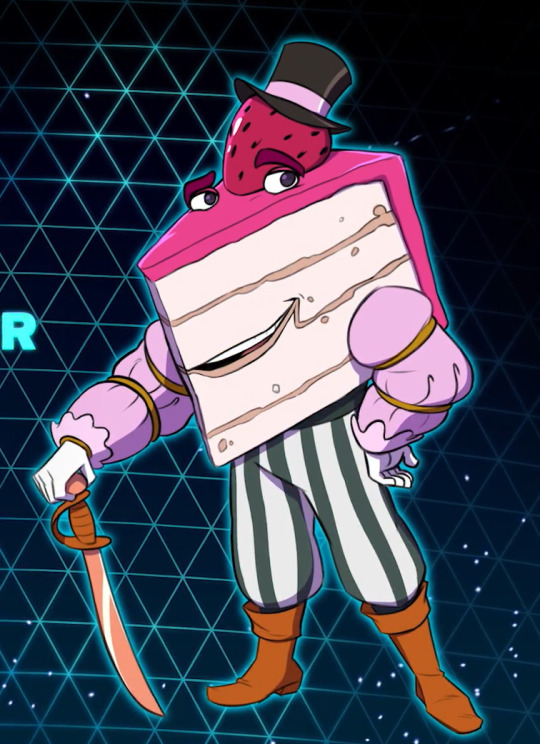
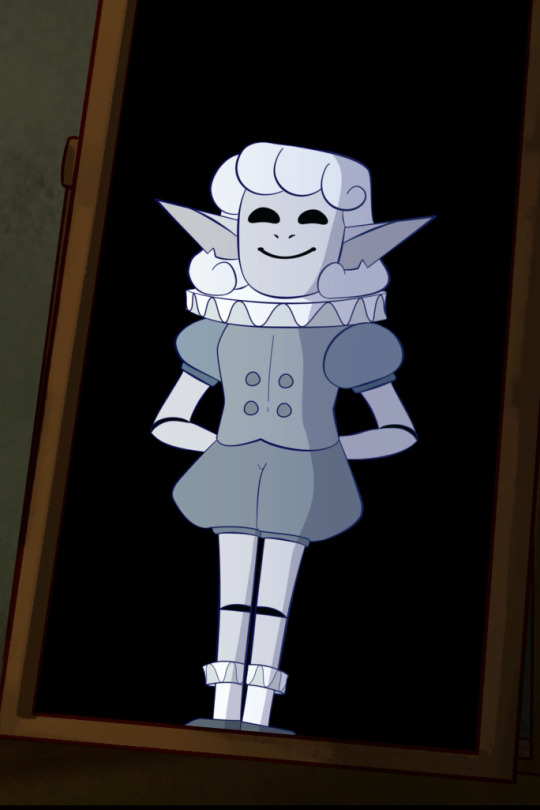
Propaganda under the cut (Contains major spoilers for A Crown of Candy)
Lord Calroy Cruller - He/him
Campaign: A Crown of Candy
Who is he?
Lord Calroy "Cal" Cruller is the Marquis of Muffinfield, and King Amethar's best friend and right hand. He is also officially recognized as the ruler of Candia for a time, after staging a coup against House Rocks, until they return to Castle Candy with allies to overthrow him again.
Why is he the NPC of All Time?
No npc leaves a lasting impression more than Calroy. From his physical design to his charming personality, wonderful inside jokes and intense plot twist he is an incredible, one of a kind character. No npc has such an epic backstabbing speech, nor such impressive pants. He charmed us all and his betrayal impacted not just King Amethar but the audience as well. His secret genius plan, his murder attempt against the king, his killer one liners. Nobody beats it. In the background from the very beginning, he is an essential part to a crown of candy and helped give us the most badass survival of any player. Amethar for sure should have died there, and yet he survived. Calroy MAKES a crown of candy. He elevates it to a truly glorious game-of-thrones-but-better story full of the perfect traitorous secrets and blindsides the show needed. Nobody can beat that.
Baron from the Baronies - They/them, it/its and he/him
Campaign: Fantasy High Sophmore Year
Who is it?
Baron is a nightmare entity that resides in an unknown mirror dimension. It was created from Riz's lies, perpetuated by the curse of the Coin, when he pretends to be dating someone from The Baronies named Baron.
Why are they the NPC of All Time?
He’s genuinely frightening, and is so very fun to quote and imitate. Yeah, out of the gate, he’s a creepy little guy, but then it turns out he represents the fear of being alone and being left behind by your friends?? Terrifying, gut wrenching, incredible. You don’t often see such a visceral reaction from the intrepid heroes to an npc but Baron really aced that.
Most frightening NPC. Little Victorian mannequin creature who picks apart your deepest fears. I love him.
That little skeleton boy lives in everyone's head rent-free. Who wouldn't want Roëmænce Partnær living in their head rent free.
He's creepy, he's the manifestation of Roz's aroace fears, what more could you ask for? Truly an iconic scene
#dimension 20#dimension 20 bracket#dimension20npcofalltime#dimension 20 tournament#d20#fantasy high#fantasy high sophomore year#a crown of candy#acoc spoilers#acoc
30 notes
·
View notes
Text
Emily Wilde’s Encyclopaedie of Faeries review
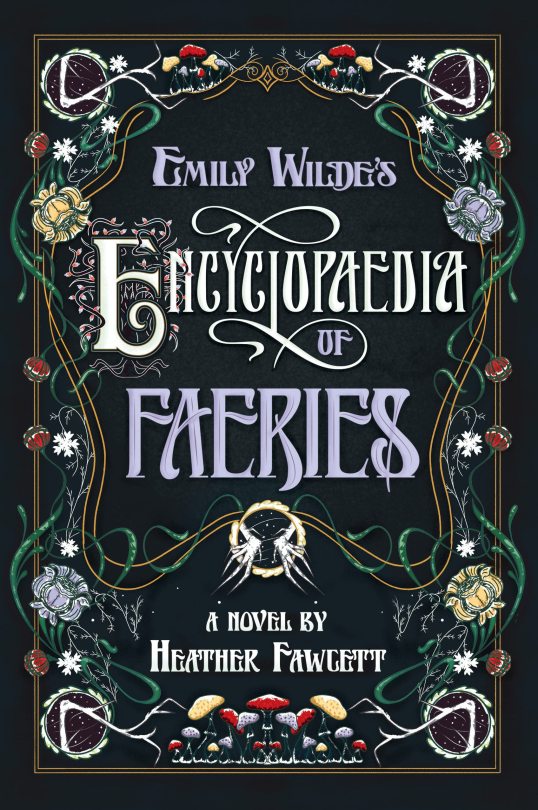
5/5 stars Recommended if you like: cozy fantasy, epistolary narrative, fairies, early 1900s, autistic MCs I've been meaning to get around to this one for a while and finally did. I'm really liking the cozy fantasy genre (and cozy sci-fi) and this is no exception. There was a plot but it was slow paced and fit well into Emily's daily life and academics. There were high stakes at the end, but overall this is a relatively low stakes story. I liked how dryadology was depicted as a legitimate academic discipline with methods, conferences, and its own scandals. As someone who is involved in academics and will likely pursue a career in research/academia, it felt very realistic. A lot of the methods Emily and Wendell use are legitimate methods we use in anthropology and linguistics and I really enjoyed seeing them put to use in a fantasy field of research. The scandals of extrapolating too much info or faking research are also very reminisce of early-20th century academic scandals that we see in real-life disciplines. I very much appreciated Fawcett's attention to detail here and I really think it helped create a realistic, engrossing world. The faeries themselves were interesting too. There are a bunch of different kinds and subtypes of those kinds that vary across regions. We get to meet a few of these during the course of the book, and it was interesting to see their mannerisms and looks. I also like that our narrator is an expert in the field and so we get additional information about the faeries we meet as well as similar faeries from other locations. I like this style of diary narration too. It reminds me a bit of how the Beka Cooper series is written. Both are supposed to be diaries/journals, but other than mentioning writing or the date, the book generally reads as traditional narration rather than epistolary (which has its place in my heart too). In this particular case, I definitely think it added to the story since we are made to understand that Emily is trying to be objective, but there are times when she recognizes that she's not and, in turn, we are able to recognize moments when she deviates from a strictly academic viewpoint into the more personal. Speaking of Emily, I enjoyed her narration and reading about her (mis)adventures. Emily reads as autistic to me (someone who is also autistic) and I liked that that was just presented as who she was. Wendell does poke fun at her a little for some of her social missteps, but there's no malice behind it and no one pressures Emily to mask or change who she is. She can come across as blunt and isn't always able to read social cues, but she clearly has a big heart and once you're in, you're in. She's also pretty accepting of things, which is probably one of the reasons she does so well as a draydologist, and is able to roll with the punches fairly well. I also liked Emily's dog, Shadow, and thought he had some funny moments in the story. Wendell is an interesting character, and he and Emily make an even more interesting friendship. He's very outgoing and personable, able to charm just about anyone, but he's also generally pretty aloof. As extroverted as he is, he doesn't seem to connect with people too deeply, but when he does, like with Emily, he's pretty ride or die about it. I enjoyed Wendell's character and thought he brought a lot of humor to the pages with his little quirks. The side characters were also all pretty enjoyable. They all felt distinct, both human and faerie, and I enjoyed getting to know them individually. It was also interesting to see how Emily's perceptions and relationships with them change as she settles more into life in the village. One note I have is that some of the side characters have very similar names and it makes it somewhat difficult to tell them apart in a group setting. Overall I really enjoyed this book and am looking forward to seeing what Emily, Wendell, and Shadow get up to next!
#book#books and literature#books#book review#book recommendation#fantasy#fantasy book#bookish#bookaholic#book addict#booksofinstagram#bookstagram#booklr#bookblr#fairies#emily wilde’s encyclopaedia of faeries#heather fawcett#cozy fantasy#cozy reads#epistolary narrative#comfort reads#autistic coded character
10 notes
·
View notes
Text
Whitefield: Uncaging the Work-Life Oasis You Didn’t Know Existed
Imagine a Bangalore neighbourhood where towering IT hubs seamlessly blend with bustling streets, vibrant cafes, and a surprising sense of calm. This isn’t a fantasy – it’s Whitefield, Bangalore’s hidden gem, Alembic Real Estate
Beyond the Cubicle: A Symphony of Experiences
Whitefield’s remarkable transformation from an IT hub to a thriving micro-city offers a unique lifestyle, unlike any other Bangalore neighbourhood. The once sparse landscape has blossomed into a symphony of experiences, catering to your every desire. Explore a diverse range of apartments for sale in Whitefield, from modern high-rises to charming low-rise communities. Indulge in upscale shopping malls, discover hidden cafes brimming with character, or unwind in expansive green spaces – all within a stone’s throw of your doorstep
Unleashing Your Inner Zen: A Haven of Amenities
Living in Whitefield means having a world of possibilities at your fingertips. After a long day conquering the corporate world, unwind at a trendy cafe, savour a gourmet meal at a world-class restaurant, or catch a live music performance at a local venue. Fitness enthusiasts can rejoice in the plethora of options available – from state-of-the-art gyms and yoga studios to scenic jogging tracks in nearby parks. As Alembic Real Estate highlights, the Whitefield real estate market recognizes the importance of a holistic lifestyle, offering a vibrant tapestry of amenities to keep you active and engaged.
A Community that Embraces You: Where Neighbors Become Friends
Whitefield’s magic extends far beyond its impressive amenities. Despite rapid development, the area fosters a strong sense of community, a rare gem in a bustling metropolis like Bangalore. Residents connect at local events, participate in sports tournaments, and enjoy a close-knit atmosphere. This sense of belonging creates a unique haven where neighbours become friends, fostering a supportive and welcoming environment.
Effortless Connectivity: Your Gateway to Bangalore
Staying connected in Bangalore is a breeze, especially in Whitefield. The area boasts excellent infrastructure with well-maintained roads and easy access to public transportation. The upcoming metro rail project, promises even further enhanced accessibility, ensuring a quick commute to any part of the city.
Whitefield isn’t just a place to live; it’s a lifestyle destination waiting to be explored. Unleash your inner zen, discover hidden cafes, and experience the perfect blend of work and life. Alembic Real Estate, a trusted builder in Bangalore, can be your guide to finding your perfect haven in Whitefield. Contact them today to explore their diverse range of apartments and embark on your Whitefield journey!
0 notes
Text
Deltarune Ch 3 Theory (Spoilers!)
*
*
*
*
This will be sort of a ramble, and I’ll do my best to include screenshots, but this is my personal theory and thoughts on what’s happening and where Ch 3 is headed. Most of this stuff has probably been said by others, so this is mostly for me to come back to!
1. Kris
So there are a lot of moments that seems to hint to Kris’ homelife and I’ll just sort of go through them here.


When you look through the room Queen trapped you in, there’s a calendar with a vacation date circled from a search query about when college has summer break. Given how close Asriel and Kris seem to be, I’m pretty sure Kris is really anxious to see Asriel and have his support back.
Because Toriel and Asgore seem to have divorced fairly recently? Or at the very least, I think it’s still definitely taking a toll on Kris, and Asriel leaving does NOT help at all. It makes me wonder if there’s more to him leaving for college.

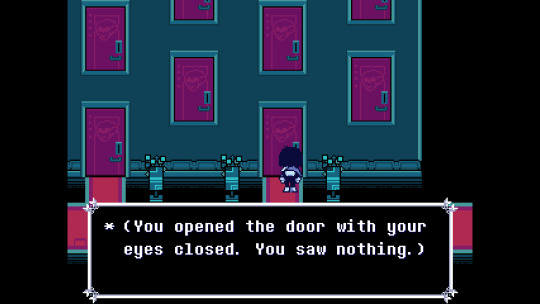
There’s another curious thing where if you decide to look through Asriel’s room, Kris shuts their eyes and seems to not want to see what’s inside, despite what the Player might want. Why? Afraid of what they’ll see? What could Asriel possibly be searching for that Kris would be afraid of the truth?
I think some incident happened in the past, one that’s related to the Dreemurr and the Holiday family growing apart, Noelle’s sister “Dess”, and Asgore apparently being removed from the police force. (If maybe he was powerless or cowardly to do something, this could have led to a divorce and Asriel leaving? I’m not sure, but I think Dess has died or its related tot he incident, and Asriel seemed close with them too so I’m sure it was also hard on him.)
(i didnt take a screenshot of the newsclipping with this info but ill put it here later lol)
Circling back to Kris, there’s several details that hint to Kris’ mindset, and basically, I think Kris doesn’t want to grow up because when you grow up you grow apart and don’t live out fun fantasies anymore. Maybe.
If you go to the flyer in the librarby, and read the one about the ICE-E event that says “Where teens can still be Kids!” Kris is relieved, for some reason. Probably because they’re glad to hear they still technically count as a kid.
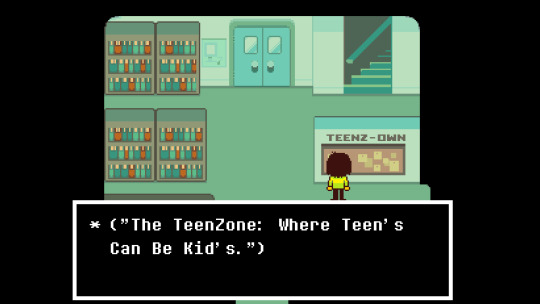

Not directly related but if you go up to the upperright room and read the book about humans, Kris quickly shuts it. Given the similarities and hints to Chara from Undertale, it seems like Kris wanted to get away from other humans or humanity in general. Which also aligns maybe with Kris being fearful of the bunker. I really don’t know what to make it past this though. Crack theory was that the world of Undertale was just a Dark World Kris made as a kid or something. Or that when “Chara” fell, it was a fall similar to how Kris and Susie fall when entering a Dark World. Lmao probably unrelated though.

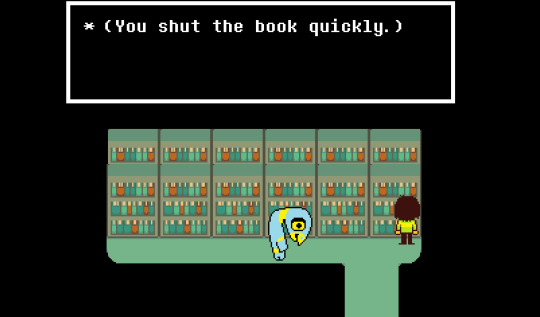
2. Dark Worlds and Escapism
The Dark Worlds seem to function as some sort of escapism, and it’s interesting that they’re all based on real life things. In Chapter 1, the Dark World was based on the classrooms various toys like checkers, chess, cards, dolls,etc. In Chapter 2, it seems even more so with Noelle. Queen actually wants the best for Noelle and is very nosy and always chasing after her, in contrast to Noelle’s real mom who is always busy being a mayor. After all, Queen does know how sad Noelle’s search history probably is. (Mainly from this post!)
(screenshots to be added lol)
Kris probably feels the same way, as both Noelle and Kris grew up together and seem to be suffering from dysfunctional families or some sort of drama.
And Queen directly says in the boss fight with Berdly that the internet and the screens provide comfort for many people, and she is well-intentioned in wanting to help make people happy. Maybe for Kris it’s video games or roleplaying or toys or silly things, kind of like how many people in the real world do similar things. I wonder if the next chapters will each focus on a different character and other forms of escapism or storytelling.
3. The Knight
So at the end of Chapter 2, Kris rips out the Player Soul and slashes the tires to Toriel’s car. Then later Susie talks about how cool it would be if they could bring Ralsei and Lancer and everyone to their world and hang out with them. Then Kris takes the Player out once again and pulls out a knife, fills the “Blade” with their “Will”, aka Determination, and creates a new dark fountain that encompasses their whole home (and maybe even the whole town).
(screenshot laterrrr)
It seems that the tires were to ensure Toriel stays inside the house though, so maybe it’s just the house. If that’s the case, and Kris really is the knight, I think Kris wants to envision a better home where things are better. Escapism right inside your own home.
If it’s the whole town, then maybe Kris already had Susie’s idea and really is going to take everyone in a new Dark World so everyone can be together. That or Susie inadvertently gave Kris the idea..it makes me wonder if we’ll see Toriel in her outfit from Undertale, or something like that. The other reason I could see it being a town-wide thing is because now Kris has the knowledge of the Roaring (thanks to Ralsei). I’m not too sure what their stance would be, but maybe they see a benefit to it?
After creating a fountain, a smile flashes on the tv, so I think the next chapter will be television based and feature a tv villain (though it does look like flowey...). Again, i wonder if each chapter will be some form of escape for some people. or maybe it’ll be a different theme.
Also, I just want to add that I really don’t see Kris as malicious or doing thing for a sinister reason. Or maybe it’s still fucked up and selfish, but not the evil people imagine. If you do the snowgrave route, Noelle doesn’t even recognize it as Kris’ voice. The sinister voice in that route seems to be the Player rather, being cruel and making Noelle make these traumatizing choices. Which is why I wonder if Kris is the Knight, or if it’s a red herring. Not sure.
4. ANYWAYS
There’s a lot to unpack. Too much to unpack, like there’s a whole thing I could say about Big Shot and Jevil and Gaster. The way maybe Kris also knows the world is just a game (maybe thats why they hate humans?? were just like go puppet go lol). But i have no idea so this was just focused on Kris mostly, and Maybe i’ll talk more but I finished the game a few hours ago and I just had to get these thoughts out even if others probably already figured it out or think its obvious. It’s just really cool! Again, most of this comes from this theory, cus i havent looked much at others (YET) since i just finished today. Anyways, FUN GAME!
If anyone has useful screenshots or whatever please feel free to add lol
#long post#oops#deltarune#deltarune spoilers#undertale#kris dreemurr#deltarune theory#sort of not really just me rambling
192 notes
·
View notes
Text
The drama Beyond Evil as a philosophical parable about human relationships.
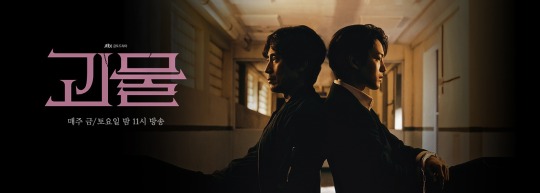
The drama begins in the spirit of the classic detective story. A young policeman, Han Joo Won, arrives in the small provincial town of Manyang, the place where a murder took place 20 years ago and remains unsolved. Han Joo Won is talented, educated and has connections at the very top - his father is deputy chief commissioner of police. Han Joo Won is also full of enthusiasm, bordering on obsession, to solve a case that his father never solved. According to the laws of the genre, we have a limited number of suspects connected by a long history of relationships, keeping their own and other people's secrets. And the biggest secret seems to be Han Joo Won's partner, police officer Lee Dong Sik. Twenty years ago, he was arrested on suspicion of the murder of his sister, but released for lack of evidence.
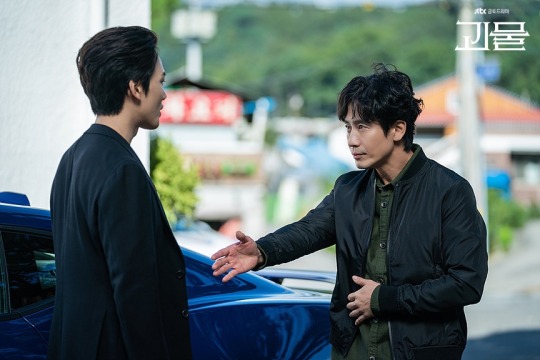
The plot of Beyond Evil is well twisted, and a new intrigue is revealed behind each denouement. But at the same time, already in the first episodes, I felt that Beyond Evil could be more than just a good detective. And I was not wrong.
From the very first episodes, we plunge into the drama, like into a fabulous whirlpool. We get to know the life of a provincial town. We watch Lee Dong Sik intently, trying to figure out what is behind his extravagant behavior. Shin Ha Kyun in this role masterfully balances on the border of light and shadow, sober calculation and madness. In the meantime, we are wondering who he is - a "fallen angel" or a bright angel who fell from a height and broke his wings. We look into the faces of all the heroes, trying to determine which of them is the monster. And gradually we are imbued with the mesmerizing beauty of this world and its inhabitants.

At first, Han Joo Won was perceived as an outsider. "Young master" in an expensive suit, completely alien among the ordinary people of Manyang. And it's not just about social status. Han Joo Won chose this role for himself - an independent observer who looks from above at the ugliness of this world and does not touch the dirt. However, the further he progresses in his research, the more personal it becomes, and the mask of equanimity slips from his face. This is how a classic detective story turns into a psychological journey - to feelings and memories walled up in the basements of the soul, into a journey to someone else and to oneself. Because these two processes always go together - to find yourself, you need to see the other and be seen. Find your own reflection in the other person's eyes.
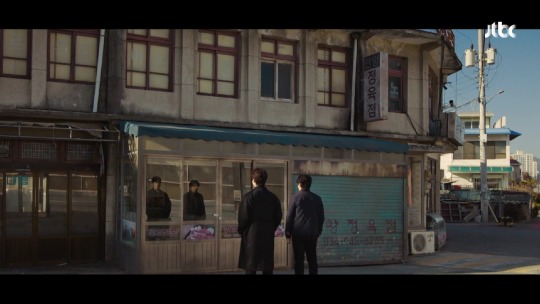
The drama Beyond Evil is a real maze of reflections. Each significant event, the history of each hero has its own reflection. Some of them are false, some of them are true, but all these fragments, put together, allow you to see the truth. There is such a method of image restoration - from several dull and even distorted reflections, you can recreate a real image. We recognize heroes by the way they are reflected in each other. And each new meeting, each new dialogue is another step towards finding a real face. This approach makes the image of each character multidimensional and deep.
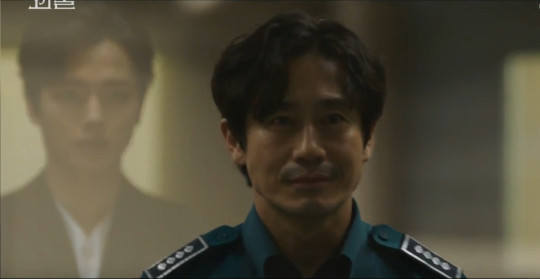
The drama really captures all aspects of the relationship. Family relationships – healthy or toxic. Relations with oneself, relationships with the world, social relationships - the law and its implementation. Morality as the ability to contact. Breaking up relationships like disappearing. The attitude towards the deceased loved ones and the ways of dealing with loss, with death. Relationships are alive, supportive and healing. Relationships are codependent, burdensome and suffocating. Personality always lives in a relationship. Fencing off from the world, a person cuts off a part of himself and, ultimately, can completely die as a person. This is how a person turns into a monster.
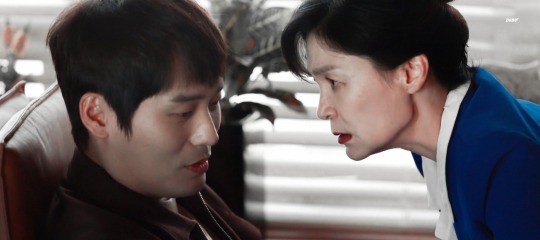
“Everyone in the city is like one family,” says Han Joo Won of the residents of Manyang. And he is absolutely right. All heroes are connected to each other by a whole network of threads. But somewhere these are the supporting threads of life, and somewhere they are suffocating fetters. The family image is central to the drama. Everything begins with it - everything ends with it. For each of the heroes, this word means something different - a project, a burden, a duty, a dream of absolute happiness. But for everyone, it carries a lot of weight. Thus, a small town turns out to be a global metaphor for a community, a social family, in which our humanity is born, but sometimes dies. The density of connections and meanings in the drama is so great that not only each character, but the whole world of the drama is felt as something living, animated. The city of Manyang is not just a place of action, but an independent character. The whole city, as an integral living system, exists according to its own laws. The Beyond Evil story is the story of Manyang's illness and healing.

What's also great about the Beyond Evil is that there is no moralizing in it. Despite the great semantic load, the author does not reduce everything to one idea, does not teach, but shows reality in its complexity, even paradoxicality. Each character is a part of a big picture, an element of the inner life of an integral system. But also everyone is a separate unique person, with their own choice and responsibility for this choice. The story of the Beyond Evil is the story of Manyang, but it’s just as much the story of two people meeting. It is no coincidence that all the main scenes are "doubled". If you look at the titles of the episodes, you can see that the pairing is "sewn" into the very structure of the script. As if the whole story is a long dialogue between two, a series of questions and answers. Each character in the drama is interesting. Each has its own story, its own drama, its own unique personality. But the main axis of the whole story is the meeting and dialogue of the two main characters.
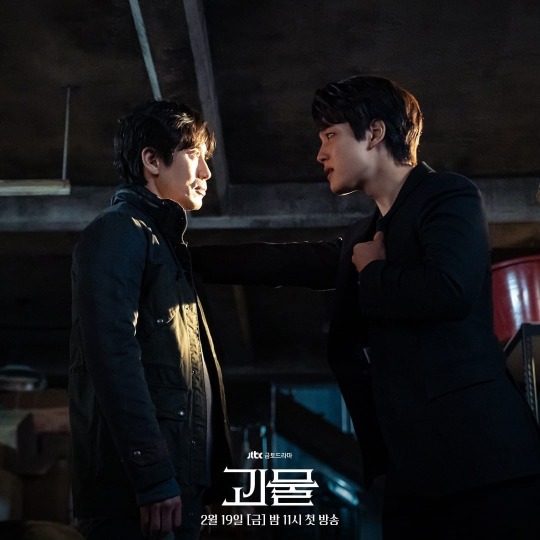
Lee Dong Sik and Han Joo Won, so different, but equally extraordinary, strong in spirit, but practically buried under the rubble of their own psychological trauma. Throughout the drama, they continually drift apart and collide, let go and catch each other, meeting again each time on a deeper level. They go a long way from mutual irritation, exploitation, projecting their fears and expectations onto each other, to true mutual understanding. Throughout the entire drama, the characters stare at each other - with suspicion, with rage, with interest, admiration, tenderness. But invariably - with intense attention, as if looking for something very important in each other's eyes. And in the end they find and return to each other the opportunity to be themselves - whole, feeling, alive. In my opinion, Beyond Evil, like no other drama, showed us an example of perfect human contact. At that difficultly attainable level, when you see and accept another as he is, in his true essence. The bromance of the main characters of the Beyond Evil is so beautiful that it overshadowed all the drama love lines for me. In fact, this is a "love story" - like the love of one soul for another soul. Someone sees them as a mentor and student. Someone sees them as father and son or even as a couple in love. In my opinion, we were specially shown these relations at such a level of generalization that each viewer is free to interpret them in his own way. For me, they are the embodiment of the idea of an existential meeting, beyond any categories.

The Beyond Evil is a theatrical chamber drama. But this simplicity of the means has a deep meaning. The real challenge for an artist is to show everyday reality as something magical, wonderful, and sometimes monstrous. And the Beyond Evil succeeded to create a heroic epic in the scenery of a small provincial town, where a butcher's shop, the basement of an old house or a reed field feel like a mystical place. Where dramatic battles and wonderful metamorphoses take place in the dialogues between the characters. Magic is created in the Beyond Evil, not taking away from reality, but immersing it in it. This is the fantasy world that really exists - in the space of the human psyche, in relationships between people.
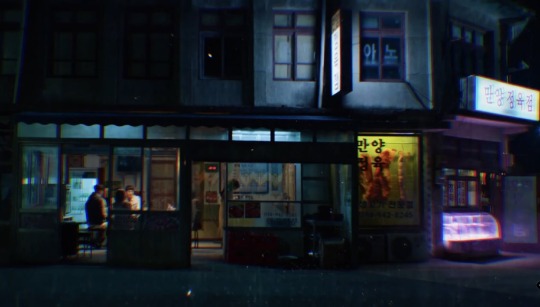
This is a huge burden on the actors. They don't just need to play their characters, the actors pretty much create the world and atmosphere of the drama. And they also need to show the development and even the rebirth of their characters. Many characters in the drama wear masks. But in the end all the masks will be removed, ripped off or washed away by the rain. And under someone's mask we will find a monstrous grin, and under someone's - a beautiful face. Shin Ha Kyun and Yeo Jin Goo play characters whose faces change throughout the drama. In each new episode, they experience new trials, different emotions, but their eyes express not only situational emotions, but also profound personality changes. In some scenes, they need to act so subtly that it is like walking on a tightrope. A slightly different expression - and the impression would be wrong. But the actors are perfect in every shot.

The talent of all the participants has created an amazing artistic world. It's like the famous Doctor Who machine - more inside than outside. And you can dive into this depth over and over again, finding new nuances and meanings.
259 notes
·
View notes
Text
Favorite films discovered in 2020

Well, this year sucked. I did see some good movies though. Some even made after I was born!
Perfect Blue (dir. Satoshi Kon, 1997)

I watch a lot of thrillers and horror movies, but precious few actually unsettle me in any lasting way. This cannot be said of Perfect Blue, which gave me one of the most visceral cinematic experiences of my life. Beyond the brief flashes of bloodletting (you will never look at a screwdriver the same way again), the scariest thing about Perfect Blue might be how the protagonist has both her life and her sense of self threatened by the villains. The movie’s prescience regarding public persona is also incredibly eerie, especially in our age of social media. While anime is seen as a very niche interest (albeit one that has become more mainstream in recent years), I would highly recommend this movie to thriller fans, whether they typically watch anime or not. It’s right up there with the best of Hitchcock or De Palma.
The Good, the Bad, and the Ugly (dir. Sergio Leone, 1966)

Nothing is better than when an iconic movie lives up to the hype. Clint Eastwood, Eli Wallach, and Lee Van Cleef play off of one another perfectly. I was impressed by Wallach as Tuco in particular: his character initially seems like a one-dimensional greedy criminal, but the performance is packed with wonderful moments of humanity. Do I really need to say anything about the direction? Or about the wonderful storyline, which takes on an almost mythic feel in its grandeur? Or that soundtrack?
Die Niebelungen (both movies) (dir. Fritz Lang, 1924)
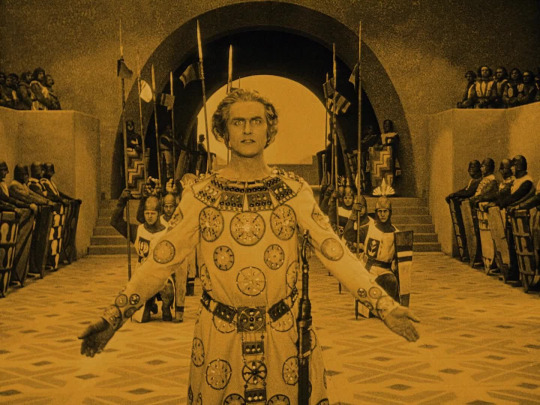
I did NOT expect to love these movies as much as I did. That they would be dazzlingly gorgeous I never doubted: the medieval world of the story is brought to vivid life through the geometrical mise en scene and detailed costuming. However, the plot itself is so, so riveting, never losing steam over the course of the four hours it takes to watch both movies. The first half is heroic fantasy; the second half involves a revenge plot of almost Shakespearean proportions. This might actually be my favorite silent Fritz Lang movie now.
Muppet Treasure Island (dir. Brian Henson, 1996)
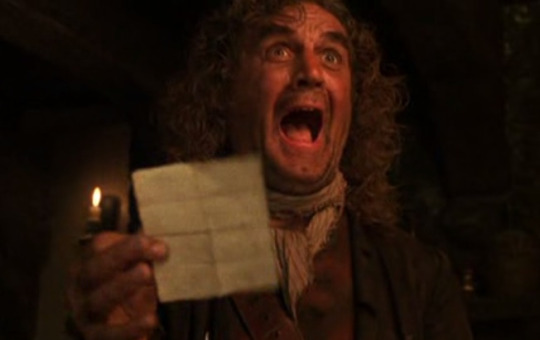
I understand that people have different tastes and all, but how does this movie have such a mixed reception? It’s absolutely hilarious. How could anybody get through the scene with “THA BLACK SPOT AGGHHHHHHH” and not declare this a masterpiece of comedy? And I risk being excommunicated from the Muppet fandom for saying it, but I like this one more than The Great Muppet Caper. It’s probably now my second favorite Muppet movie.
Belle de Jour (dir. Luis Bunuel, 1967)

I confess I’m not terribly fond of “but was it real???” movies. They tend to feel gimmicky more often than not. Belle de Jour is an exception. This is about more than a repressed housewife getting her kicks working as a daytime prostitute. The film delves into victim blaming, trauma, class, and identity-- sure, this sounds academic and dry when I put it that way, but what I’m trying to say is that these are very complicated characters and the blurring of fantasy and reality becomes thought-provoking rather than trite due to that complexity.
Secondhand Lions (dir. Tim McCanlies, 2003)
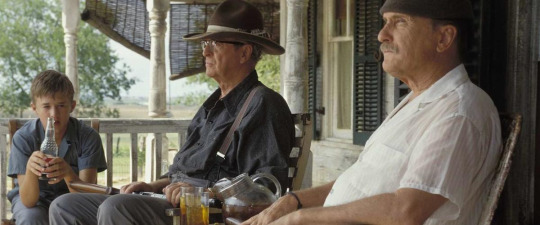
The term “family movie” is often used as a synonym for “children’s movie.” However, there is an important distinction: children’s movies only appeal to kids, while family movies retain their appeal as one grows up. Secondhand Lions is perhaps a perfect family movie, with a great deal more nuance than one might expect regarding the need for storytelling and its purpose in creating meaning for one’s life. It’s also amazingly cast: Haley Joel Osment is excellent as the juvenile lead, and Michael Caine and Robert Duvall steal the show as Osment’s eccentric uncles.
The Pawnbroker (dir. Sidney Lumet, 1964)

Controversial in its day for depicting frontal nudity, The Pawnbroker shocks today for different reasons. As the top review of the film on IMDB says, we’re used to victims of great atrocities being presented as sympathetic, good people in fiction. Here, Rod Steiger’s Sol Nazerman subverts such a trope: his suffering at the hands of the Nazis has made him a hard, closed-off person, dismissive of his second wife (herself also a survivor of the Holocaust), cold to his friendly assistant, and bitter towards himself. The movie follows Nazerman’s postwar life, vividly presenting his inner pain in a way that is almost too much to bear. Gotta say, Steiger gives one of the best performances I have ever seen in a movie here: he’s so three-dimensional and complex. The emotions on his face are registered with Falconetti-level brilliance.
The Apartment (dir. Billy Wilder, 1960)
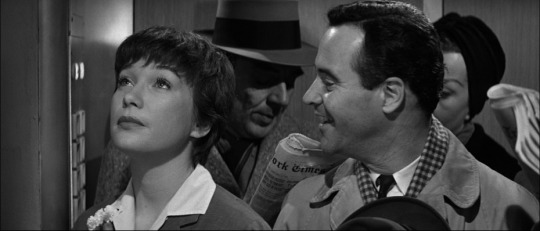
While not the most depressing Christmas movie ever, The Apartment certainly puts a good injection of cynicism into the season. I have rarely seen a movie so adept at blending comedy, romance, and satire without feeling tone-deaf. There are a lot of things to praise about The Apartment, but I want to give a special shoutout to the dialogue. “Witty” dialogue that sounds natural is hard to come by-- so often, it just feels smart-assy and strained. Not here.
Anatomy of a Murder (dir. Otto Preminger, 1959)
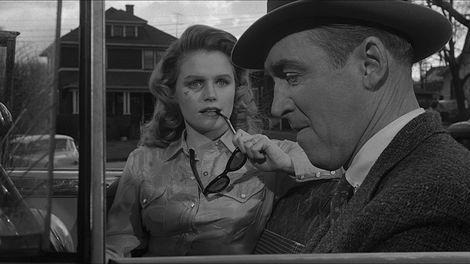
I’m not big into courtroom dramas, but Anatomy of a Murder is a big exception. Its morally ambiguous characters elevate it from being a mere “whodunit” (or I guess in the case of this movie, “whydunit”), because if there’s something you’re not going to get with this movie, it’s a clear answer as to what happened on the night of the crime. Jimmy Stewart gives one of his least characteristic performances as the cynical lawyer, and is absolutely brilliant.
Oldboy (dir. Park Chan-Wook, 2003)

Oldboy reminded me a great deal of John Webster’s 17th century tragedy The Duchess of Malfi. Both are gruesome, frightening, and heartbreaking works of art, straddling the line between sensationalism and intelligence, proving the two are not mutually exclusive. It’s both entertaining and difficult to watch. The thought of revisiting it terrifies me but I feel there is so much more to appreciate about the sheer craft on display.
Family Plot (dir. Alfred Hitchcock, 1976)
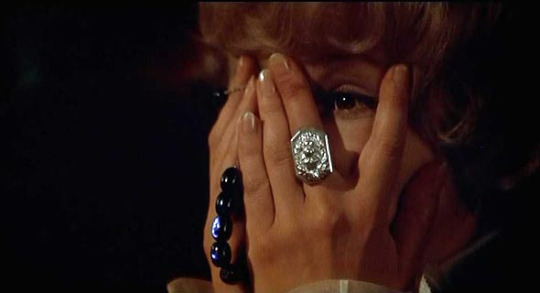
Family Plot is an enjoyable comedy; you guys are just mean. I know in an ideal world, Hitchcock’s swan song would be a great thriller masterpiece in the vein of Vertigo or Psycho. Family Plot is instead a silly send-up of Hitchcock’s favorite tropes, lampooning everything from the dangerous blonde archetype (with not one but two characters) to complicated MacGuffin plots. You’ll probably demand my film buff card be revoked for my opinion, but to hell with it-- this is my favorite of Hitchcock’s post-Psycho movies.
My Best Girl (dir. Sam Taylor, 1927)
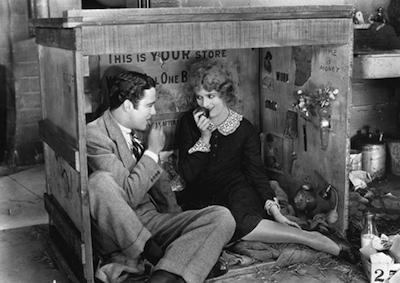
Mary Pickford’s farewell to silent film also happens to be among her best movies. It’s a simple, charming romantic comedy starring her future husband, Charles “Buddy” Rogers. Pickford also gets to play an adult character here, rather than the little girl parts her public demanded she essay even well into her thirties. She and Rogers are sweet together without being diabetes-inducing, and the comedy is often laugh out loud funny. It even mocks a few tropes that anyone who watches enough old movies will recognize and probably dislike-- such as “break his heart to save him!!” (my personal most loathed 1920s/1930s trope).
Parasite (dir. Bong Joon-ho, 2019)
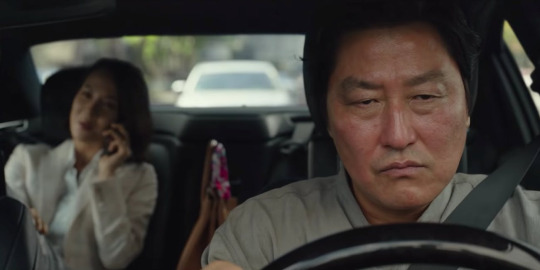
This feels like such a zeitgeist movie. It’s about the gap between the rich and the poor, it’s ironic, it’s depressing, it’s unpredictable as hell. I don’t like terms like “modern classic,” because by its very definition, a classic can only be deemed as such after a long passage of time, but I have a good feeling Parasite will be considered one of the definitive films of the 2010s in the years to come.
Indiscreet (dir. Stanley Donen, 1958)
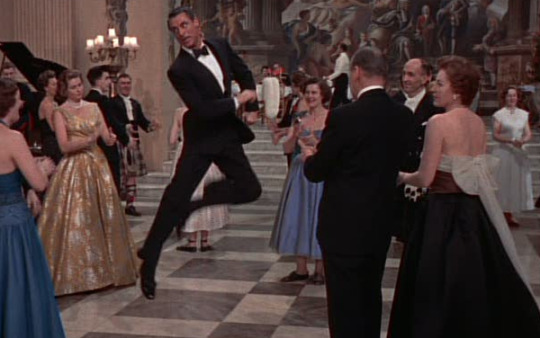
Indiscreet often gets criticized for not being Notorious more or less, which is a shame. It’s not SUPPOSED to be-- it’s cinematic souffle and both Ingrid Bergman and Cary Grant elevate that light material with their perfect chemistry and comedic timing. It’s also refreshing to see a rom-com with characters over 40 as the leads-- and the movie does not try to make them seem younger or less mature, making the zany moments all the more hilarious. It’s worth seeing for Cary Grant’s jig (picture above) alone.
The Taking of Pelham One Two Three (dir. Joseph Sargent, 1974)
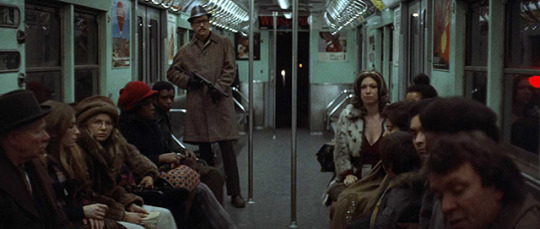
This movie embodies so much of what I love about 70s cinema: it’s gritty, irreverent, and hard-hitting. It’s both hilarious and suspenseful-- I was tense all throughout the run time. I heard there was a remake and it just seems... so, so pointless when you already have this gem perfect as it is.
They All Laughed (dir. Peter Bogdonavich, 1981)

Bogdonavich’s lesser known homage to 1930s screwball comedy is also a weirdly autumnal movie. Among the last gasps of the New Hollywood movement, it is also marks the final time Audrey Hepburn would star in a theatrical release. The gentle comedy, excellent ensemble cast (John Ritter is the standout), and the mature but short-lived romance between Hepburn and Ben Gazarra’s characters make this a memorably bittersweet gem.
The Palm Beach Story (dir. Preston Sturges, 1942)

Absolutely hilarious. I was watching this with my parents in the room. My mom tends to like old movies while my dad doesn’t, but both of them were laughing aloud at this one. Not much else to say about it, other than I love Joel McCrea the more movies I see him in-- though it’s weird seeing him in comedies since I’m so used to him as a back-breaking man on the edge in The Most Dangerous Game!
Nothing Sacred (dir. William Wellman, 1937)

I tend to associate William Wellman with the pre-code era, so I’ve tried delving more into his post-code work. Nothing Sacred is easily my favorite of those films thus far, mainly for Carole Lombard but also because the story still feels pretty fresh due to the jabs it takes at celebrity worship and moral hypocrisy. For a satire, it’s still very warm towards its characters, even when they’re misbehaving or deluding themselves, so it’s oddly a feel-good film too.
Applause (dir. Rouben Mamoulian, 1929)

I love watching early sound movies, but my inner history nerd tends to enjoy them more than the part of me that, well, craves good, well-made movies. Most early sound films are pure awkward, but there’s always an exception and Applause is one of them. While the plot’s backstage melodrama is nothing special, the way the story is told is super sophisticated and expressive for this period of cinema history, and Helen Morgan makes the figure of the discarded burlesque queen seem truly human and tragic rather than merely sentimental.
Topaz (dir. Alfred Hitchcock, 1969)
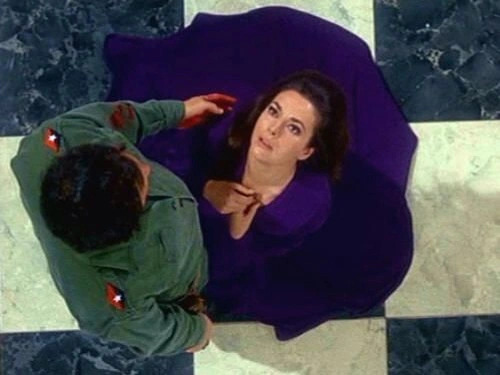
Another late Hitchcock everyone but me seems to hate. After suffering through Torn Curtain, I expected Hitchcock’s other cold war thriller was going to be dull as dishwater, but instead I found an understated espionage movie standing in stark contrast to the more popular spy movies of the period. It’ll never be top Hitchcock, of course-- still it was stylish and enjoyable, with some truly haunting moments. I think it deserves more appreciation than it’s been given.
What were your favorite cinematic discoveries in 2020?
#thoughts#belle de jour#topaz#family plot#the taking of pelham 123#the pawnbroker#nothing sacred#my best girl#applause#muppet treasure island#perfect blue#die niebelungen#parasite#the good the bad and the ugly#the palm beach story#they all laughed#indiscreet#oldboy#anatomy of a murder#the apartment#secondhand lions
157 notes
·
View notes
Text
The industry reflected on television
This is a translation of the post x made by @larryisinlove and @faithinrainbows
On many multiple occasions through the media around us we have read or heard a lot of people talking about the reality that the music industry faces and a lot of their aspects that we may not notice at a first look. However, we can see that a variety of TV programs (many of them released for younger audiences) gave us some kind of hints or messages on many chapters they present to us. Chapters which show us the reality artists face in the world of music industry.
Let's start by talking about the Disney series, "Hannah Montana." In the episode (3x10) we can see the protagonist of the series, Miley, dressed as the teenage pop star Hannah Montana along with a famous boy named Austin Rain, who claims to be her partner to the photographers and the media.
At first we see them united showing themselves in front of the cameras, but the reality behind it is that the relationship was only created to promote their song together called "Us Isn’t Us Without You."

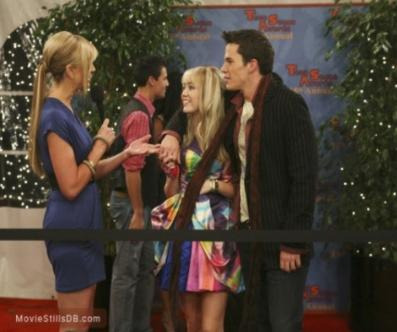
We are also going to mention the moment when one of the most famous series for children created by Nickelodeon, a very recognized television network, tried to make a reference ( more like a parody in my opinion) to a massive TV network we all have seen in the past which is Disney Channel. In one episode called “The Dingo Channel” they talk about a channel called “Dingo Channel” tried to copy the structure of the web channel protagonist the series iCarly and the way that channel was run in that period of time. We can see it as a satire the way some of the rumors Disney Channel and their creator were involved in. They qualified Disney basically like a network with little originality.
It is interesting to see how certain topics are presented as a joke, such as wars between television networks. Or how the protagonists go from making a channel on the internet to making it to television, but little by little they find big changes that the production wants to introduce, among them, change to the protagonists, and other modifications that culminates with a different program to the original.
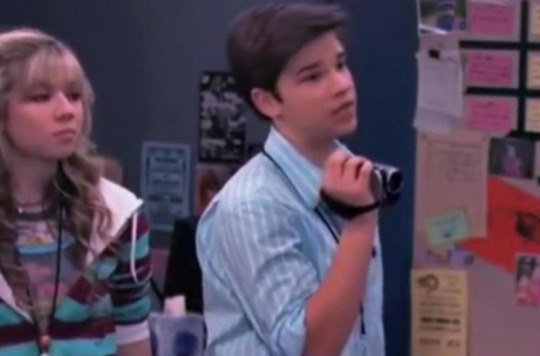

The third program to mention is another from Disney, "Gravity Falls" (1x17). They present to us a band called "Sev'ral Timez", and the protagonist is a fan of them. So, together with her friends, they decide to attend one of their concerts.
At the end of this, the girls are curious to know what is behind when the group disappears, so they go behind the scenes without anyone seeing them, to find various capsules. Inside them you could see the same boys, in different sizes, and the band in a large cage, as if they were animals. According to them, their manager keeps them safe that way.
You can see how the series wanted to demonstrate what happens many times in the industry, wanting to create perfect bands or artists, who manage to sell their image to their fans.

We go on to see what the fourth program presents, in Austin & Ally (Third season-episode 22). One of the Disney series that most thematically refers to the life of an artist in terms of their experiences or events they experience at such a young age is without a doubt Austin & Ally. Several things have been mentioned in relation to the life and growth that an artist has in this episode, exemplifying the main characters of this series. In addition to having their typical Disney touch that characterizes them, it also shows how the characters develop their personalities in the artistic environment and in the world of the music industry.
A clear example in this particular episode called "Relationships and red carpets" that draws a lot of attention at the moment of analyzing it, is to see how Austin and Ally prepare for an awards event, they have been nominated in the same category and would basically come to mean the big moment of the beginning of their careers as pop stars. They planned to announce their relationship to the public eye, but something happens that caught a lot my attention and that is something not far from reality is that Jimmy (owner of the record company in which Austin signed) prohibits him to make his relationship something public with the clarification that it would not be a good thing for his image and that what he wants to sell with Austin is something for teenagers who will eventually buy his music and have that fantasy of being able to go out and date that star, that star he wants to turn him into. He explains openly that this will make him sell more albums in the future. In this episode Austin and Ally try to make their relationship a secret with the purpose of showing Jimmy that they can deal with this. They even deny their relationship to the press at the award ceremony, but they realize that it is not easy at all. Austin risks his career at the cost of it by telling everyone he is dating Ally. This tells us that maintaining an image for sales is too important, it shows us that these things are not taken easily.
As a consequence Austin is unable to release music in any ways for the next 10 years due to the power that his label presents over his music by certain contracts that are mentioned in a basic way in the series.


The next show belongs to Nickelodeon, "Victorious." In this series we find a rather peculiar chapter, within this we see in a developed way how they ask teenagers to send videos showing their skills in music, and with that they achieve a career. The person who did these auditions was a man named Mason, and particularly he is British, with great power in the industry.
The winner of the contest is Tori, the protagonist of the series, who is summoned to a confidential meeting in order to talk about her future. She happily goes with the idea that she should only sing and be her, to which they respond "Your image does not sell, so we are going to create a new one for you", something that we know happens a lot. And they put a condition on it. They tell her that she can't tell anyone about her control over her image, not even her friends. This is how they put wigs on her, flashy clothes, and invent an insolent personality in addition to rumors that generated controversy, among them, causing a stir in restaurants in front of many people.
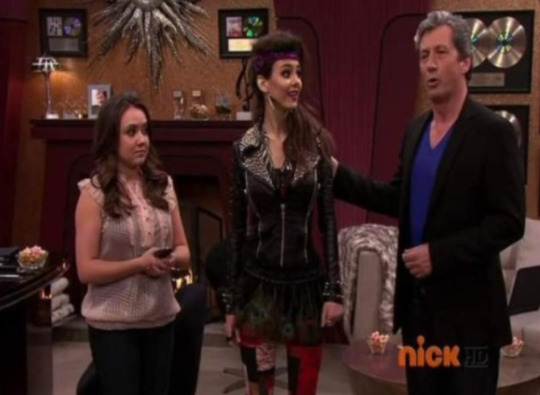
To finish, we are going to present what the movie Starstruck tells us, the life of a superstar and a girl he meets throughout the plot. In this film we see how this artist handles the moments in which he is told what to do to clean up the image he has a little and get more opportunities as an actor, he must keep himself out of the public eye, and obey everything they tell him to do or say and be cautious with whom he hangs out because of recent problematics he has had.
Basically this film, apart from touching the typical Disney theme of a love story, shows how this star tries to handle this fight in which he is constantly told what to say to the media or the people around him and also shows the way in which the media greatly influence the image of this artist. You can see the behavior of Christopher, the protagonist, at the time of making decisions in order to take care of his own image with the purpose of getting the role he wants to play, all this starts as it is usual from a recommendation that his manager gave him, therefore this idea does not come out of his mind and sporadically says or does things that make the girl he has a romantic interest in feel disappointed because she doesn't like the person that this star tries to be reaching a point of collapse due to all the hate and harassment by journalists which falls into it as a result of things the star said in order to clean its own image. Jesssica, played by the well-known Danielle Campbell, gets tired of having constant harassment by the press, which was waiting for her to say something about the relationship of this normal girl with the big star Christopher is. She decides to give a speech that allows us to understand the intentions that these media require, to sell an artist and sell articles or magazines at the cost of freedom, privacy and quality as a person. (This is highly ironic). The star reconsiders and thinks that the best thing to do is to start taking control of his image and his life and decides to leave his opportunities as an actor and tell his parents who in a way were in charge of taking care of his image that they are fired and he wants to be himself.


As we could see in the examples mentioned above, and in many more that were not named, there are series or films that contain episodes in which they will give us examples or clues, some more direct than others, about the management around the artists in the middle.
It is not unusual that there are so many examples, and so many similarities between them, or with what one already knows, hears, or reads.
The objective of this post is to imply that it is no secret what companies or managers do with their artists, the changes in appearance and personality, transform them completely, or even invent lives that they do not have. These chapters, or scenes that we name, are a step forward to show publicly what happens, and that the affected people cannot come out to say it.
26 notes
·
View notes
Text
Top 10 Favorite Manga
I was bored today so decided to make a list of my top ten favorite manga, with little comments describing what’s great about them:
Apocalypse Zero by Takayuki Yamaguchi If you were scared off by the OVA… well, you might still hate the manga since it’s even more crazy and explicit. But the anime failed to capture most of what makes the manga so unforgettable, be it the deliberately over-the-top tone; charmingly grotesque characters; bizarre eroticism; or the stunning artwork. Plus Kakugo is the perfect man?!
Devilman by Go Nagai This has finally reached the mainstream so I don’t have to describe how influential it was/is. I consider it Nagai’s most put-together work, and where his art looked the best; rough but expressive and with lots of character (for that reason I recommend reading the original edition if you can, not the later ones with the stylistically jarring additions). Although to be honest, my true trashy Nagai pleasure is Cinderella Knight…
The Holy Terrors by Hagio Moto I’m not a huge Hagio Moto fan. I recognize her greatness, but most of her original work doesn’t really speak to me. Her adaption of Jean Cocteau’s novel, though, is some of the most magnificent comic work I’ve ever seen. Their unique styles meld to create something not quite Moto and not quite Cocteau... a dreamlike union.
Maison Ikkoku by Rumiko Takahashi This was a tough pick, since I like individual elements of other Takahashi works more (particularly Mermaid Saga and her short stories), but Maison Ikkoku is the one I find the most compulsively rereadable. It’s still so relatable, while also being such a charming snapshot of what everyday life was like in Japan during the 80s. The characters have foibles but aren’t stereotypes, not even Godai’s wacky neighbors (well, except for Yotsuya), and even the romance subverts her infamous will-they-or-won’t-they waffling by delivering a poignant payoff by the end.
Me-teru no Kimochi by Hiroya Oku I feel like I shouldn’t love this manga half as much as I do. Oku is a creator I have a lot of issues with normally. No matter how intriguing the initial setup, all of his long-term series tend to fall apart at the seams... but this three-volume manga manages to come together in a genuinely amusing and touching way. The last few pages make me emotional every time I read them.
Nausicaa of the Valley of the Wind by Hayao Miyazaki This seems like a cliche choice but, despite how popular Ghibli is in the West now, I feel like a lot of people are still sleeping on this manga. Since it isn’t primarily aimed at children, unlike his films, Miyazaki is able to add a lot more darkness and moral complexity to this apocalyptic war story; I was impressed when, by the end, even his saintly heroine was forced to get her hands dirty. The style is unique (inspired more by European comics than Japanese manga), the world building is fascinating and the entire cast has so much more depth (esp my girl Kushana). The last two volumes are absolutely staggering.
Ogre Slayer by Kei Kusunoki When Viz released the first two volumes of this manga when I was a kid, it was a shock to my system. Kusunoki lavishes as much detail on the terrifying ogres as she does her attractive main character, the nameless boy on a fruitless quest to become human by hunting his own kind. The juxtaposition of cathartically gruesome violence with the emotional, largely female-coded trauma the ogres represent is captivating. So although the series starts to lose steam toward the middle of its run, I still love it for the strength of its early installments.
Rose of Versailles by Riyoko Ikeda I feel guilty whenever I admit this, but most of the time I prefer the anime adaptions of shoujo manga (Fruits Basket, Kare Kano, Ouran Host Club, Please Save My Earth… this is even the case for one of Ikeda’s later works, Onii-sama e). But the Rose of Versailles anime doesn’t come close to matching the detail and grandeur of its source material imo. If you’ve only seen the series, please please make sure to read the manga as well, esp if you love Andre as much as I do… Dezaki did him (and by extension his romance with Oscar) dirty!
Twin Knights by Osamu Tezuka I wasn’t that enamored of Princess Knight, but this sequel captured my attention in a big way. It’s so imaginative and fun, has great supporting characters and features some of Tezuka’s most beautiful Disney-inspired panels. It also manages to avoid most of the dated gender essentialist stuff that made me roll my eyes so hard in the original, despite them both being from the 50s.
Violinist of Hameln by Michiaki Watanabe Where do I even start with this one? It’s honestly a mess, but the best kind of mess. A fantasy adventure about a hero that fights monsters with the magical music he plays on his jumbo-sized violin, the ping-ponging between cheesy humor, extreme tragedy and shonen manga power-leveling is disorienting at first, but you get used to it. The art is a bit amateur (and becomes increasingly abstract as the series goes on) but you can feel the enthusiasm the author has for his work jumping off the page. Plus, it’s jam-packed with classical music trivia!
I’m sure I’m forgetting some big ones but these are the first that come to mind. What are your favorites? Now that I basically have no work to do (orz) I’d love to read some new stuff. Off-kilter series in particular!
#manga#text post#my favs are all either violent and/or romantic lol#I guess my tastes tend toward the extreme
834 notes
·
View notes
Text
Geralt & Yennefer & The Fandom
I knew it was going to happen the moment the Witcher went ‘mainstream’. It partially happened already when The Witcher 3 Wild Hunt came out and the fandom suddenly became huge and popular, outside of Poland and other Central and Eastern European countries. But back to the point.
Since the Netflix show came out, I’ve seen several (ok, actually quite a lot) people (mostly new fans) complaining about Yennefer, Yennefer’s arc, and - the worst - how she is ‘getting in the way’ of a potential romance of Geralt & Jaskier because she dares to be Geralt’s love interest.
Look, I am all for “ship and let ship” policy, there’s nothing wrong with being a fan of a relationship that is not canon. I understand that there is a severe lack of representation of canon m/m relationships and that people would love too see more of it in the mainstream media.
But in this particular case and in this particular story...some Things Need To Be Said.
Geralt & Yennefer relationship is not boring and forced. As far as the romance goes, there is literally nothing ‘conventional’ or ‘typical’ about them, apart from the fact that he is a man and she is the female.
WARNING: There might be some book spoilers under the cut.
When Sapkowski was asked about their relationship, he often answered that the clue was to present them as the antithesis to That Love Story that he often encountered in other fantasy novels or movies - a handsome, heroic man who falls in love with a princess, saves her and they live happily ever after. But in particular, it was Yennefer who was his main subject of ‘turning typical tropes on its head’.
When Geralt meets Yennefer, he’s presented with a woman who is..let’s say, unlikeable. She’s not a princess and she doesn’t need saving. On the contrary, she’s the kind of woman who could kill Geralt with a wave of her hand, before he could even blink. And Geralt not only knows that, but he likes that. She is also kinda mean, abrasive and controlling - both in the books and on the show.
But somehow...Geralt looks past that. He sees Something More in her and he sees that immediately. He instantly recognizes the trauma she’s trying to hide from the world and the mask she’s wearing (in the books there’s this long paragraph of Geralt’s internal monologue when he realizes that Yennefer used to be hunchback). And what’s more important - he sees in her the traits they both share. They both come from rough places, they’re both loners,they’re both unhappy and they both deep inside long to be loved. They’re also both isolated from the society which looks upon them (the show kinda failed to show this, but you need to know that it’s not only witchers that are hated by the common people - wizards are treated like that as well.)
So..yeah, Geralt falls in love with her. And yes, it’s probably love at the first sight. Is it a trope? Yes, but it’s not presented in the ‘typical’ way. It’s turned on its head. There’s no knight in a shining armour falling in love with a cute princess. Geralt is not a knight and Yennefer is anything but lovable woman. And they don’t get their happily ever after (at least not for a long time).
Geralt makes a wish to save her because he already loves her and doesn’t want to lose her. And what’s important - In the books Yennefer knows exactly what he wished for (which is again something that the show changed) because she heard him. And no, she’s not pissed. She’s not angry. She’s “astounded” that Geralt - being able to chose literally everything in the world - money, respect, being ‘normal’ - ignored that and chose her. Despite her being nothing but aggresive and hateful towards him prior that. That is the moment when she for the first time starts to feel something for Geralt. Because she simply can’t believe that someone could make such sacrifice for her. It’s a huge moment which the show failed to portray correctly.
But like I said before - the bliss doesn’t last for long. Geralt & Yennefer for a long time have an “on” and “off” relationship. They meet and break up time and time again. They can’t last together not because they don’t love each other, but because each of them has such a baggage of emotional problems, insecurities that they need to work on, that it takes its toll on their relationship. Geralt feels he’s unable to love truly because he’s a “mutant”, while Yennefer longs for a ‘missing’ piece in her life (a child she can’t have).
In the Sword of Destiny, Yennefer tells Geralt that she and him “are made for each other” but it’s not going to work because they “need Something More”. At that point of the story the reader doesn’t know what she means by that but later it’s pretty clear that this “Something More” is Ciri herself. She’s the missing puzzle both in their lives individually, but also in their relationship. She’s like a bridge between Geralt and Yennefer.
So as you can see - the core of this story is family. Family by choice, created by Geralt, Yennefer and their adopted daughter. It’s a story about broken people who somehow find each other and love each other, despite the odds and events not working in their favour. It’s not a boring cliche or a forced romance bullshit.
Ok, that was longer than I intended it to be. I am not asking you to stop shipping Geralt & Jaskier or to start loving Yennefer. I just want to present a bigger context, which some of you may be missing right now. By disregarding Yennefer (who btw is a great character on her own, without Geralt) and her role in the protagonists’ lives, you’re doing yourself a huge disservice. I am simply asking to give it a chance and wait for the story to unfold.
P.S. : Some of Jaskier’s most famous ballads are canonically about Geralt & Yennefer. He basically made them famous across the world, with people gossiping and retelling tales about their love story ;)
#the witcher#the witcher netflix#geralt of rivia#yennefer of vengerberg#geralt x yennefer#geralt x jaskier#yes i am tagging it like that as well#yennefer#geralt#ciri#meta
2K notes
·
View notes
Text
Pat Bond, a Sexual-Subculture Pioneer, Dies at 94
Mr. Bond was a 44-year-old music teacher when he founded an organization for masochists. After a few meetings, sadists were also invited.
Image

The Eulenspiegel Society, an organization for adherents of bondage, dominance, sadism and masochism, took part in the Christopher Street Gay Liberation Day March, the precursor to New York City’s gay pride parade, in 1973. Pat Bond, the organization’s founder, can be seen directly behind the organization’s banner, wearing jeans and a tie.Credit...Leonard Fink, via The LGBT Community Center National History Archive

By Penelope Green
May 11, 2021
He was not a sex educator, a sex worker or a political figure. No case law was established in his name.
But to cultural historians, anthropologists, sex educators and members of the now sprawling alternative-sex community known by the umbrella acronym of B.D.S.M. — for bondage, dominance, sadism and masochism — or by the more prosaic (and historical) term “kink,” Pat Bond, to use the pseudonym he preferred, was a foundational figure, applauded at conferences, noted in academic papers and hailed as an elder by those who shared his interest in role-playing sex.
A modest, elfin man with a Van Dyke beard that turned snowy with age, Mr. Bond had long had masochistic fantasies but had never acted on them until he was 44. It was 1970, and the identity politics of that era made him think there must be others like him. He wasn’t looking for sex so much as community when he placed an ad in Screw, the pornographic magazine geared toward heterosexual men, that read:
“Masochist? Happy? Is it curable? Does psychiatry help? Is a satisfactory life-style possible? There’s women’s lib, black lib, gay lib, etc. Isn’t it time we put something together?”
Five people answered the ad, but only two showed up to that first meeting in Mr. Bond’s tiny East Village apartment: a heterosexual woman who went on to adopt the pen name Terry Kolb and a gay man who never returned — annoyed, Mr. Bond said later, “that we were all into different things.”
ADVERTISEMENT
Every week, however, more and more people appeared: just masochists at first, but eventually sadists, too, were welcome.
All were eager for community, not just sex, and under Ms. Kolb and Mr. Bond’s leadership, they formed a nonprofit organization. They named it the Eulenspiegel Society for Till Eulenspiegel, a picaresque character in German folklore who was cited as a symbol of masochism in “Masochism in Modern Man,” a 1941 book by Theodor Reik, a protégé of Freud’s, that was one of the few texts at the time about this erotic minority.
Alternative papers like The Village Voice at first refused to run ads for the organization, which later adopted the acronym TES. But after Mr. Bond, Ms. Kolb and others picketed The Voice’s offices and Ms. Kolb wrote an article, which The Voice published, advocating for “masochist’s lib,” the paper relented.
TES meetings were run like encounter groups with educational programming — expert speakers weighed in on sexual techniques or on legal or psychological issues — and also as exercises in consciousness raising, following the practices of the day.
The group hashed out an ideology — “freedom for sexual minorities,” as they described themselves — and advocated for their community, marching in the Christopher Street Gay Liberation Day March, the precursor to New York City’s gay pride parade. There was a board, and a mission statement, written by Mr. Bond, that declared, among other freedoms, “the right to pursue joy and happiness in one’s own way, according to one’s evolving nature, as long as this doesn’t infringe on the similar happiness of others.”
Image

Mr. Bond in the early 1970s. He was 44 when he held the first meeting of the Eulenspiegel Society; two people attended.Credit...via Terry Kolb
Mr. Bond died on Feb. 13 in a hospital in Far Rockaway, Queens. He was 94. Deborah Callahan, a family friend, confirmed the death, which was not widely reported at the time, and said he had suffered from congestive heart failure.
“TES was really a new kind of kinky organization in that it was social, political and educational,” said the feminist author and cultural anthropologist Gayle Rubin, who has written extensively about sexual subcultures.
Dr. Rubin, who is an associate professor of anthropology and women’s and gender studies at the University of Michigan, added: “TES expanded the organizational repertoire of sadomasochism. In addition, Pat Bond and Terry Kolb began to develop a political language for S-and-M.
“They were able to do that in part because of the times. It was a period when many social movements were articulating political frameworks for various populations that had been marginalized. They also drew from the language of gay liberation, where there was already a model for repositioning what had been seen as sexual deviation as a sexual minority. To do this for sadomasochism was pretty breathtaking at the time.”
(Ms. Kolb left the group the year it began and moved to California. She eventually joined Samois, a group for lesbian sadists and masochists, the first of its kind, that had been modeled on TES. She now identifies as bisexual. In a phone interview, she remembered Mr. Bond as being “introverted and very serious.”)
The Eulenspiegel Society was unusual in collecting disparate groups — heterosexual as well as gay — “and affirming their dignity and defending their political rights,” said Rostom Mesli, who has studied the identity politics of the 1970s and is the managing director of the Leather Hall of Fame, which recognizes individuals or organizations that have made distinct contributions to kinky subcultures. Mr. Bond and Ms. Kolb were recognized in 2015.
“The assumption,” Dr. Mesli added, “was that kinksters who would never have sex together still had things to do together, could learn from one another or do activism together. It totally redefined the borders of the kinky world by creating a sense of community and shared identity among groups that had evolved with virtually no connection among each other.”
TES had its own magazine, Prometheus, at first distributed at meetings and erotic specialty stores, but eventually at mainstream emporiums like Tower Records in New York City. It is now online only. In the early days, it included an S-and-M horoscope and comic strips, as well as personal ads and ads for supplies.
Mr. Bond wrote articles in which he wondered if S-and-M behaviors were cathartic or developmental. He worried that they might veer into abuse, or become addictive. And he urged that his organization “practice diligence and intelligence” so that it might always be “a liberating force.”
The magazine was not without a sense of humor. After the list of names on its masthead, a parenthetical promised, “If we missed anybody important, we’ll grovel in the next issue.”
Pat Bond was born Walter Allen Campbell on May 24, 1926, in St. Petersburg, Fla., the youngest of three children. His father, Joel, was an orthodontist who died when Allen, as he was known, was 6. His mother, Marie, was a homemaker.
He attended the New York State College for Teachers at Albany, now the University at Albany, and graduated in 1951. He worked as a music teacher in New York City’s public school system and later as a secretary.
Since the late 1970s, Mr. Bond had lived in a basement apartment in Ms. Callahan’s family home in Far Rockaway, a century-old three-story clapboard house that his mother had owned and sold to Ms. Callahan’s parents. Ms. Callahan’s father, known to TES members as Brother Leo, was Mr. Bond’s best friend.
“Allen was a member of our family,” Ms. Callahan said. “He would sing at our dinner table, and lead us in Christmas carols. He was lovely. He cared deeply about justice, and doing the right thing. He was marching for various causes up until 15 years ago. He always wanted to be helpful, even when he could no longer really help.”
Mr. Bond was married briefly when he was young, and the marriage was annulled. He eventually found a dominatrix after TES’s founding — he called her his “lady friend,” Dr. Mesli said. That relationship lasted for nearly half a century, until the woman’s death a few years ago.
“Our sexuality has typically been something you make fun of or sensationalize to sell something,” said Susan Wright of the National Coalition for Sexual Freedom, an advocacy group that fights discrimination against those in the B.D.S.M. community. “Pat offered something different: Let’s just sit down and talk. He was at the cutting edge of conversations about consent and understanding what it means to look your partner in the eye and not be scared to be honest about what you desire.
“Consent is the heart of this community,” she continued. “It’s the difference between kink and abuse. And then of course the education: How do you do this safely? If you’re going to be spanked, what’s the best spot?”
In the half-century since TES’s founding, Mr. Bond’s organization and the community it serves have come out of the shadow — sort of.
In 1996, the author Daphne Merkin wrote an essay about spanking in The New Yorker that raised eyebrows in the chattering class. But less than a decade later, the “Fifty Shades of Grey” trilogy — essentially a contemporary bodice-ripper, but with spanking, about a young woman’s relationship with a wealthy sadist — was a runaway best seller, and then three movies. If the behavior it depicted didn’t exactly become mainstream, its rituals entered the cultural vernacular.
Image

Mr. Bond at TES Fest, his organization’s annual convention, in 2017. He attended the conventions, held in hotels in New York and New Jersey, until 2018.Credit...Efrain John Gonzalez
At its peak, in the early 1990s, the Eulenspiegel Society had 1,100 members. The internet pruned its ranks — there are countless alt-sex communities and dating sites online — but also opened its programming to a wider audience.
This year, TES turned 50, and it still offers weekly meetings (now virtual) and classes. Until the pandemic, TES held annual conventions, known as TES Fests, at hotels in New York and New Jersey. They had the flavor, participants said, of an academic conference, but with a twist: There would be classes in rope handling, whip technique and handkerchief code, as well as more serious programming about consent and negotiation.
Despite his age, Mr. Bond was able to attend the 2018 TES Fest, his last. “Someone offered to put him on a leash, in an age-sensitive way, and led him around,” Michal Daveed, a spokesman for the organization, recalled. “He seemed very happy.”
Penelope Green is a feature writer in the Style department. She has been a reporter for the Home section, editor of Styles of The Times, an early iteration of Style, and a story editor at The New York Times Magazine
10 notes
·
View notes
Text
My honest honest opinion on second citadel season 3
Uhhhh... short answer? I didn’t like it much.
Okay wait before I go on to my long answer I need to say that this is all just my opinion and it’s all subjective. If you liked sc season 3 that’s awesome! I get why you do and I’m glad you enjoyed it!
But I really wasn’t a fan of where they went with it (even from episode 1), and I’m gonna go on a long rambly and repetitive rant about it.
I’m not gonna talk about the way the season ended and the setup for s4 because I haven’t fully formed my opinion about that - to form my opinion means to relisten to the season and i don’t really feel like doing that.
Anyways, these are my unfiltered 2am thoughts about the Rest Of It - maybe I’ll neaten it up later to make it more palatable but for now it’s wordy n messy and you can just. Not read it bc it’ll probably make you mad, or feel free to pick it apart and tell me I’m wrong, or unfollow me (and at least one person has already done so lmao) but like that won’t change the fact that I just wasn’t feeling s3 so uh. That said.
Long answer? I love the second citadel... at least the first two seasons
I love the world building, how the setting is such a unique, deliberate step away from eurocentric fantasy, how refreshing all that is! The Second Citadel (the place) is rich with culture and history from the brief glimpses we get of it (mostly in knight of the crown). Not to mention the monster society, with its own rules (or lack thereof) and environments and personalities.
I love the storytelling, how different mediums are woven into the way each episode is formatted. Rilla has her tape recorder, Damien his prayers, Caroline her letters, and each medium is so well suited to each character, and it truly lets us get a glimpse of what’s going on in their minds, and I find it utterly fascinating how a protagonist of one story could just as easily become an antagonist (or at least, an annoyance) in another
And the characters! Each one so compelling, with their own goals and motivations, their own intriguing backstories and potential.
Most importantly, the way these characters play off of each other is what makes second citadel amazing. Getting to see people with similar experiences but different world views clash (Caroline and Mira), people with fundamentally different beliefs reconcile and meet in the middle (rilla and arum), just, Kabert created so many interesting characters, and watching them bounce off one another is a joy.
And that’s what made season 2 so great for me. The exploration of each character, getting to see their good sides and bad, through either a medium tailored for them, or through interactions with others, as they explored a fascinating world.
The end of season 2 left me so satisfied, but still with so many questions and excitement about what was to come. I wanted to see Talfryn come into his own and step out of his brothers shadow. I wanted to see Damien, Arum and Rilla navigating their new relationship. I wanted to know more of the fate of Rilla’s parents, Damien’s past, the consequences Arum would surely face after defying the monster court. I wanted Marc to finally be recognized by his fellow knights, to watch as Caroline lead the journeymen knights, while learning to trust in others as she was beginning to do. I wanted Angelo continuing to unlearn the implicit biases that had been instilled in him as a result of his upbringing, or more details on Caroline and Quanyii’s relationship. I was also curious!! How would human and monster relations change after the events of the finale? And would we learn more of the past, when humans and monsters lived together in peace?
I was buzzing with excitement for season 3, and then.. it came, it aired, and then it went.
And I felt... meh?
Don’t get me wrong. There were moments that I liked. Some of what I hoped to see did happen (see the above paragraph lmao), getting a glimpse of the western wastes with its own culture a joy. The dynamics between Olala and some of the characters were really fun! And the direction the story took at the end was one I didn’t expect, but left me open to more.
That said,,, everything else about the season just. Didnt gel with me.
Everything I loved about second citadel pretty much wasn’t there??? Aside from Caroline, Angelo and Quanyii, all the characters they spent so much time introducing to us and fleshing out over 2 seasons were just relegated to the side??
I think my main problem with season 3 was that it felt like a completely different show. Characters introduced as part of an ensemble became side characters in (what was supposed to be) their own stories. Character arcs that got set up were dropped, and mysteries/backstories teased were forgotten. Heck, the monster court and senate wasn’t even brought up! The aftermath of the fear bugs attack ont the citadel went unexplored! It’s like nothing in the past season even happened!
And I’m sorry I gotta say this, but the problem is Olala.
I mean. Okay I don’t wanna be super mean- she’s perfectly fine as a character. We root for her, we cry when she cries, and we cheer when she wins the day.
But since all the episodes were centered around her, we didn’t get to see anyone else’s inner worlds. And like okay, yes, they did it for this season of Juno Steel too, where Juno, the previous POV a character for 2 seasons, became a part of an ensemble, and was a side character for many episodes. But this choice worked for Juno and not Second Citadel, because it was a natural progression for his story! We spent 2 seasons exploring Juno’s character, his backstory, his motivations, we saw him come to terms with his family history, grow and change as a person, and by the time he joined the Carte Blanche, we’d gotten to a point with Junos story where we’re okay to step away for a while, and see events through the lens of others.
But that just?? Doesn’t work in second citadel? Because unlike Juno, the characters introduced in s1-2 are virtually unexplored! There’s still so much about their stories we don’t know, and so many ways for them to progress.
But we didn’t get any of that! Stuff established in s1-2 barely got payoff in this season. Characters stagnated, and when previously it was amazing to watch them interact with each other? Having each episode throw different combinations of characters together and seeing how they clashed and came together? Yeah we didn’t get that, it was all the same characters bouncing off of Olala, which is fine at first, but honestly? After the first couple episodes, it got stale.
And remember how before, we would get to see the characters tell their story through a medium suited for them? Well I noticed that the format of this season was a lot moreee audio drama-y (basically a TV show but with no visuals) and while there’s nothing wrong with that, one of SC’s strengths was in using the medium in unique ways, presenting the episodes in unique formats depending on the POV character. And with the exception of a few moments, the season really lacked that!
I know there were episodes in s1-2, like caves of discord and the Janus beast which didnt follow that format, but I think it’s a fan consensus that the episodes that do (moonlit hermit, KOTC lots, lady of the lake) are favourites, because they fully embraced the advantages and limitations those framing devices offered, and were truly perfect for character exploration.
It’s like. Idk. Imagine wolf 359 s3 where the si5 were introduced, and there was like 1-2 episodes of them interacting with the rest of our cast, but then after that the rest of the season just completely focuses on Eiffel and the new characters, and everyone else just disappears n twiddles their thumbs and doesn’t even do anything during the finale. That’s what happened this season, and that’s the kinda weird vibe I’m talking about.
Since I’m already rambling, I might as well just say some more stuff. I was disappointed with the music this season. I can tell Ryan Vibert was trying to figure a way to make SC sound different from Juno, and he was getting there in s1-2! The pieces that stand out now are the soft, acoustic guitar pieces, like Rillas song, or the lone melody line of the guitar in the SC theme. I thought he was getting it with s3e1, when Marc fought the dinosaur while traditional Japanese instruments were playing!! But then for the rest of the season, it was just samey echoey ambient electric guitar, like how it is for Juno. There could’ve been so much potential to give this world its own musical identity, but in the end, that attempt was dropped (at least that’s how it come off to me), just like so many other elements introduced in s1-2!
I’ve gotten this far in my rant, and I haven’t even talked about the story. And the story is. Hmmmmm
Like. It’s completely serviceable? Kabert are good at what they do so the story is a okay I guess? But to be completely honest, the characters and story were so tied together in previous seasons, so much so that in this season, even though the plot was just fine, it stayed just that. Fine. it always felt like there was something missing because the characters were the story, and to have just. So many holes in that department meant that the story itself was fundamentally empty.
Anyways uh. All of this is to say that this all boils down to character. I had my nits to pick with other elements but the fact that Rilla, Arum, Damien, Marc and Talfryn got completely sidelined (Tal most of all) when so much of the previous seasons were spent setting them up- in favour of a completely new storyline featuring new characters and settings when there was still so! Much! Left! Unfinished! From unfulfilled arcs to dynamics left untapped, and creative potential lost, the essence of the show was watered down and it left me with the intense feeling of
:/
Idk. Season 3 felt like a completely different show. I liked s1, I loved a2, but s3 just. isnt second citadel for me. I’ll probably still listen to the next season out of loyalty, but I don’t think I’ll ever feel as passionately about the shows future as I do it’s precious seasons, especially if they continue this way.
Sorry.
#wow thanks for reading all that if you made to to the bottom#I’ve been sitting on these thoughts for a while but I couldn’t sleep last night bc Thoughts so here#I feel like I’m swinging a bat at a hornets nest even though I’m not putting this in the fandom tags ah well#and uhh I guess it’s okay to reblog this??#my posts
15 notes
·
View notes
Text
Preferences: Guilty Pleasures
Characters: Okoye, Lucifer Morningstar, Dewey Finn, Peter B. Parker, Ahkmenrah

Okoye
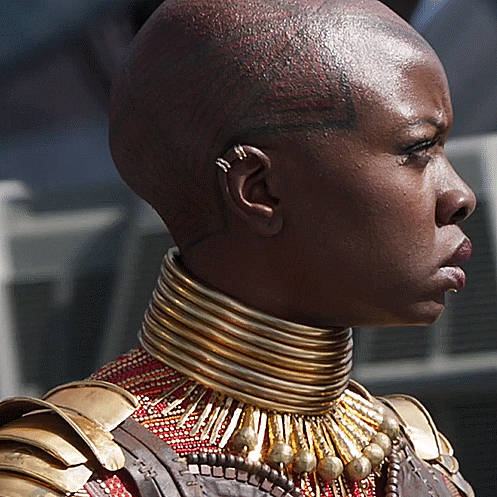
Okoye is straightforward and stony upon first impressions. And, admittedly, even afterward. The only real difference is that, if one gets to know her better, they might find shock in the fact that in spite of her appearance, she Dora leader actually likes sweets. However, it’s not sweet things in general that Okoye feels guilty for enjoying: It’s Starbucks.
Starbucks is the antithesis of everything Okoye is associated with: Supremely un-Wakandan, a chain establishment, and overall just not worth the absurd cost. Not to mention superbly unhealthy when compared to the rest of a fighter’s typical diet. But yet you can bet that every time she needs to go out of the country or off-continent, there’s an invasive shout for joy at the possibility that she might be able to get her hands on a Frappucino (followed by an internal scolding).
She can’t even explain exactly why she likes it; there are plenty of good, even healthier sweet things back in Wakanda -- heck, back anywhere else!
But it’s a bit like when someone craves the cheap taste of school pizza over a legit pie cooked in a stone hearth: She just loves the sugary sweetness, the application of whipped cream to an already tooth-rottingly saccharine icy drink, the addition of chocolate. But Bast, she also hates it. But ever since T’Challa practically shoved a grande cup of caramel frappucino into her hands, she hasn’t felt entirely the same.
Against her better judgement, she’s more or less unintentionally tried 45% of the menu drink-wise. She doesn’t particularly care much for the food part of the establishment, though if she should ever find herself in one during the fall, she might indulge in a chunky slice of pumpkin bread under the conviction that it’s healthy enough for being gourd-related. Never mind that it’s just a cinnamon mixture with more sugar than actual pumpkin-derived anything.
Really, of all those mentioned on this list, Okoye is the one who probably feels the most disappointed in herself whenever she indulges in her guilty pleasure: It’s a betrayal to her patriotism, to her dignity, and to her attempts to eat healthy. But damn, if this type of betrayal doesn’t taste so addicting . . .

Lucifer Morningstar

The thing about Lucifer is that it’s actually a bit hard for him to feel any regrets over liking anything; he’s the Devil, after all, so his whole thing is about embracing the things that make you feel good. And even besides that, he’s mostly managed to skate by in his time on Earth by categorizing things as Stuff He Likes, Stuff He Tolerates, Stuff He Doesn’t Bother With, and Stuff Humans Seem to Enjoy But He Doesn’t Quite Get. It’s a tad restricted of a system but you can’t argue with results.
However, just because something is difficult doesn’t mean that it’s impossible. The Devil can, in fact, recognize absurdity in liking certain things. Hence why, to a point, he’s fallen prey to his own bizarre pleasures: The Devil has guilty pleasures, and it’s in stupid YouTube videos, Vine, and TikTok.
After he finally drank the Kool-Aid and got himself a smart phone, it was only a matter of time before Lucifer fell down the rabbit hole that is YouTube prank videos and strange uploads about nonsense and animal humor. It was also only a matter of time before he found himself stumbling into Vine compilations. The Celestial is terrifically mystified by the creative power of humans, managing to tell entire stories and peak comedy in only a span of seven seconds. But he’s also quite loathe to have realized it’s been long defunct by the time he’s discovered it.
He’s even more loathe to find himself making references in his daily life: He has actually quietly blurted out, “I sure hope it does” in response to seeing a Road Work Ahead sign, causing Chloe some confusion (and Lucifer lots of embarrassment). He has referred to a culprit as “Jared, Age 19″. Since discovering Vine, there has been at least one night wherein he and a bed mate were sitting there with barbecue sauce on his tiddies, but that was by sheer coincidence.
But eventually the Vine compilation well dried up, and the inevitable transfer over to TikTok happened. And Luci honestly doesn’t know what to make of TikTok. He would describe it as Vine’s Molly-addicted cousin based on its obsession with dancing, but the dances are so stationary that even that doesn’t seem quite right. The videos on the platform are also much more . . . bizarre. And some of them admittedly trigger a fight-or-flight response in him, to which he always chooses the third option of freezing if only so he can keep watching the train wreck unfold before his eyes.
The trouble with TikTok, he’ll admit to himself, is that it’s not as easy to find iconic content the same way he could with Vine. However, this isn’t to say that he hasn’t found anything worth watching over and over and over again . . .
(Let’s just say the “Wolf Pack Compilation” lives in his head rent-free, and he’s both too amused by it and too overwhelmed by its vibe to try and evict it.)

Dewey Finn

Dewey is . . . a special case. Given that he associates messy living and indulging in one’s pleasure a part of the rocker lifestyle, he’s generally quick to embrace whatever makes him happy. He’s very upfront about his interests and is arguably almost incapable of feeling shame. But it’s in there: Deep down. No, not in himself -- in his Spotify. Specifically, a Spotify account made on an email he never uses because it was made specifically to create this separate, uber secret playlist.
One marked “Actual Musical Bops.”
Dewey hates musicals: They’re cheesy, uninspired, gaudy, ridiculous, totally aimed at chicks with weird fantasies that he could never aspire to, and the music is just overall unimpressive. And yet, somehow, against his music elitist nature, a handful have managed to slip through the cracks. At the very least, a handful of numbers have clawed their way past his defenses and into his ear, where they now live rent-free.
In spite of his best efforts, the problems are that he’s a New Yorker, so it’s inevitable that he hears a song or two; and also that, as an instructor (to wealthy New York tweens whose families can afford frequent tripes to the Great White Way, no less), he’s definitely going to wind up hearing about some shows and their stand-out numbers: Against his will, he knows the lyrics to “My Shot”; he has cried in the secrecy of his apartment to “When I Grow Up”; in the never-necessary reason he needs to remember how many minutes there are in a year, he sings it inside his head; hell, he’s even found himself trying to figure out the electric guitar riff from “The Phantom of the Opera” during his down time.
What’s all the more embarrassing is that, given how he presents himself as a music elitist, there’s just no way he can come back from this if anyone were to know. He has to catch himself when he finds himself humming “Johanna” in the teacher’s lounge. He scowls at himself when he can’t sleep and gives in and starts playing “No One is Alone.” He wants to kick his thick ass every time he realizes he’s excited to have stumbled across a “slime tutorial” on YouTube, this one with better quality than the last. The reason he actually put a password on his phone wasn’t out of privacy like a sensible person would, but out of a need to make sure that no one ever found out that he had downloaded the entire Beetlejuice soundtrack, including jankily-recorded songs that never made it to the official cast recording for whatever reason!
And should anyone ever find out about any of this, Dewey has a plan: “Oh, I’m doing research. I’m studying these songs so I can give the kids a lesson on what not to do as actually competent musicians.”
But the lesson would never actually come. Mainly because he keeps prolonging his “research” . . .
He’s also developed a bit of a soft spot for My Little Pony: Friendship is Magic due to some students gushing about it, but he would rather sooner die than ever be associated with the term “brony.”

Peter B. Parker
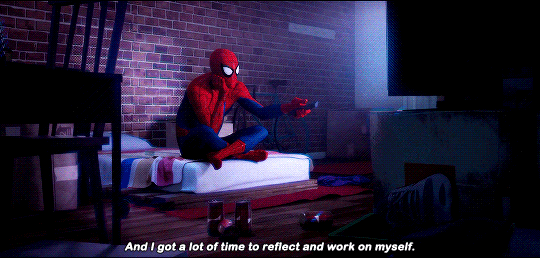
Peter is at a point where he’s too tired to really care about the idea of guilty pleasures. The way he sees it, there are bigger priorities at stake than worrying about someone finding out about your love of some hokey activity or food or form of entertainment.
Besides, he’s a New Yorker: There’s way weirder stuff for people to just not pay any real attention to. Hence why he thinks nothing of his bizarre eating habits. And no, this isn’t referring to his disastrous appetite: This is about his tendency to eat food with his hands. Foods that, well, he really should probably utilize eating utensils for.
To be fair, this habit has always existed in him in some form or another, especially since, as Spider-Man, he often needs to eat food on the go. But during the time he spent living the life of a depressed bachelor, it came out in full force. On the rare occasion he wasn’t eating a food that deserved to be eaten by hand, he often found himself loathing the idea of doing the dishes afterward. There would be days he’d feel only slightly less depressed; enough to make a box of Kraft Mac n Cheese in the pot, but not enough to avoid cutting out the middle man.
He’s thankful the craptastic apartment wasn’t also see-through because if it were, he’s positive his neighbors would’ve thought they were bearing witness to a man’s breakdown as he wept into a pot of macaroni and cheese, his hand full of the stuff, while wearing a Spider-Man costume. (And, to be fair, they actually would be.)
In addition to this, there were also those nights where he would be prepared to actually tuck in to a plate of spaghetti, only for some crime going on elsewhere in the city to drag him away. By the time he’d return, the plate would’ve been cold and his energy too depleted to want to even dream about cleaning more than he already had to.
The great news is that he’s thankfully done a 180, now able and willing (if begrudgingly) to clean up after himself. But bad news is that this feral man will still eat a fully-loaded baked potato like an apple. In a park. In front of women and children. He’s just too tired to care anymore. He’s aware of the guilt in this as a concept, but he’s also aware that he needs to take whatever happiness he can get out of whatever he does. And if that means eating everything by hand, then so be it!

Ahkmenrah
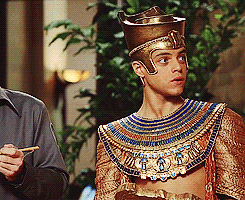
Funnily enough, Ahkmenrah doesn’t seem to experience much of any shame for enjoying the things most might feel the need to hide: He’s constantly curious and has missed out on a lot over the centuries, so why should he feel bad for wanting to indulge in them? Celebrity gossip is just a more fun version of the palace gossip he’d grown up hearing as a boy; reality TV is like watching a play, but with much more fights, less deaths, and more faulty romances; and sloppy meatball subs are like a feast for a man of his time!
Besides, he’s a king: Kings shouldn’t have to feel embarrassment over what the common folk might think.
And yet . . . It took some time, but eventually Ahkmenrah did experience it: Guilt in his pleasures.
He couldn’t even recall where it had all started. Maybe he was searching for more content to swallow after the most recent season of his new favorite show had ended? Whatever the case, he wound up biting off more than he could chew when he stumbled upon . . . fanfiction.
The adorable yet sad thing is that he didn’t even think anything of it at first. It wasn’t until he brought up a ship he’d invested his last few nights awake exploring on the computer: Nobody knew what the crap he was talking about, so of course he felt the need to explain it. But the more he talked, the more perplexed his friends looked. And the more he could feel his cheeks and ears burn.
Oh, he thought. Is this . . . embarrassment? Is that what this feels like? Oh, this is just foul.
Thankfully, nobody pressured him to keep talking about it, but the poor king sure as heck didn’t feel much of a desire to talk any further about it. But he needed to talk to somebody about his newly acquired “feels” as those online were calling them.
Joining fanfiction-oriented sites was the next obvious step, of course, but he’s experienced mixed feelings about it: On one hand, it’s nice to talk with people who share similar views and excitement about a fictional couple. But on the other, the digital wars that have broken out both disturb him and bring out the worst in him.
Like, of course there are bigger things to deal with than whether or not So-So is better off with Him-Ham, but if you truly think that Blah-Blah and Himhaw are a healthy relationship, then you can go do a service and bury yourself in the desert sands to provide substance to the hungry beetles with your flesh --
Suffice to say, a lot of the guilt in this pleasure seems to come from the fact that Ahk can get a little too emotionally invested if the work is really good. He tries to limit his interactions to commenting and praising certain works, and encouraging content creators. However, he’s also contemplated contributing his own pieces of fiction to the fandom . . .
#okoye#lucifer morningstar imagines#dewey finn#peter b parker imagines#ahkmenrah#okoye imagines#lucifer imagines#dewey finn imagines#ahkmenrah imagines#regrettablewritings#spiderman into the spiderverse imagines#spiderman itsv imagines#spiderman imagines#i tried posting this on my phone and it literally fucking deleted EVERYTHING#anyway @staff: the fuck is up? fix that shit because now i literally cannot post SHIT on my phone from my laptop#preference#preferences
70 notes
·
View notes
Note
Sorry about the double ask so here's a fun idea, Emperor Belos wrote The Good Witch Azura books. Like he wrote them in his younger years before becoming a parasitic tyrant. - Pixel Anon
That seems like it’d be the perfect opportunity to segue into a lesson about Death of the Author, which- Given Sense and Insensitivity, and how this show already discusses how fiction affects reality and connects with it… Would be VERY refreshing to see, especially as a moral that I don’t really see other kids’ shows exploring! I do recall OK KO bringing it up with the Hero Cards not representing Kappas, but the more the merrier. It’d also be fitting to discuss Death of the Author, and separating a work from a terrible creator- Given the show’s frequent references to Harry Potter, which has a rather infamous author…
For neurodivergent kids who really get into hyperfixations and fandoms, which Luz and Amity basically are- It’d be fascinating to see them navigate this kind of twisted revelation! And it’d also force them to really re-examine The Good Witch Azura, because sometimes a work can’tbe separated from the harmful ideas of its creator, especially if it was made to transmit them… If Azura ever talks about dealing with ‘savages’, that’d be VERY sus and make matters a lot more complex. But then again, Azura also reconciles with Hecate, so it could be a matter of recognizing a work’s more problematic areas and criticizing them, while still enjoying it.
And, this makes sense, as The Owl House really does convey that experience of engaging with media and fiction, and how it relates to real life… And how media and fiction CAN mean a lot to people, it’s perfectly valid for one’s hyperfixations to mean the world to them! It’s treated as objectively terrible for Luz to throw away her Azura book, and bar a few social misunderstandings, the Azura books have otherwise brought nothing but happiness for her and Amity, and even functioned as something for them to bond over!
It’s perfectly okay for fiction to mean a lot to Luz, and she’s not being childish for wanting to hold on, to keep enjoying it- So it’d be an interesting discussion when Belos’ authorship is thrown into the mix, amidst potential problematic bits here or there. Then again, Luz is an ND-coded kid who continues to find solace in these stories, which would suggest that there isn’t anything there that would bother her- At least, nothing she’d have really noticed until someone pointed it out to her.
Then there’s the appropriateness, of Belos’ own fantasy being what could’ve led to Luz being deluded in her own right, projecting fantasies and dreams onto reality, wanting to be a chosen one… It’d be an extension of the kind of harmful delusions and ideas he puts into others, tying it back all the way of Luz herself, prior to arriving on the Boiling Isles! It’d give us insight to Belos as someone who really gets people to believe in the idea of being special, of being chosen, specifically for the Emperor’s Coven… And how this could relate to HIS character, if he himself is also a victim of these kinds of issues. If Belos is Luz, in that she never learned to differentiate fantasy from reality, and felt entitled towards bringing her stories to life.
Perhaps Belos isn’t REALLY chosen by the Titan, he just likes to think of himself as a Chosen One- Or he was, but others can also quality for this honor, which is something that aggravates Belos because it alludes to him not being more special than others. Because to Belos, it’s not enough to be unique and valid in your own way; You must be actively better than others, and the creation of the Emperor’s Coven above all reflects this. The belief that magic is a privilege, a luxury, something you must actively earn or be more worthy of than others for…
It’s also an interesting contrast, as if Belos has also been influenced by his works, or his works are a reflection of that- Then it’d set him apart from Luz as someone who actively deludes himself. As someone who is voluntarily blind, and willfully ignorant- Just like Lilith, who was inspired by Belos and looked to him as a role model when she was younger. Even before becoming a parasitic tyrant, Belos was a dark reflection of Luz, subjecting others to fantasies and delusions… Maybe not initially maliciously nor willingly, maybe it was just him having fun like any author. But then this innocuous action became very dark in retrospect, as Belos and his ‘hobbies’ worsened and took on a more harmful role for the people of the Boiling Isles.
I suppose it’s worth noting that Belos’ imagery invokes a lot of white, which is also seen with Azura’s predominantly white-and-purple robes… While Belos is white-and-gold. If Belos is a dark deconstruction of Luz’s assumption of a Chosen One narrative and fantasies, then maybe he’s also a deconstruction of Azura herself; And this of course suggests that he actively emulated his own creation. He’s artistic and a writer like Luz is, but it seems Belos got TOO convinced by how good he was, and couldn’t take constructive criticism- Which could be like King as an author in Sense and Insensitivity, up until he realizes that Luz’s input helped make him so great!
Luz and Amity can still engage in fantasy and fiction, the show always lets them find joy in this… It’s just a matter of finding the distinction between the two and recognizing it. Fully indulging into fantasy is what could’ve led Luz to accepting Adegast’s illusions… But entirely rejecting is is the path that is the Reality Camp, which would’ve sucked the fun and joy out of Luz and turned her into a hollow, soulless imitation of herself. It’s okay to find comfort and media and even be inspired by it, to even take lessons from it; And while you should always prioritize listening to real life when it says otherwise, I think it’s worth observing that Luz’s quest to be a good person like Azura… Well, influences her to be kind!
And it’s this desire to emulate Azura that influences Luz to learn magic, which creates yet another hyperfixation that brings the girl joy, and leads to her connecting with Eda and everyone else in the Boiling Isles in the first place by staying there! Perhaps Belos will contrast with Luz in that while he recognized media’s ability to make him feel happier, he ultimately used it as a crutch, a substitute for actual meaningful interaction and connection with other people- Thus creating the monster we see today. There could be the idea of finding role models, people you want to emulate- But also recognizing their flaws, where to criticize them, and not be like them. That could tie into how Eda is a teacher to Luz, but isn’t always right and excels by taking Luz’s feedback into consideration, instead of assuming she always knows better and will never be wrong.
All in all, this is a fascinating idea Pixel Anon! Even if Belos has no literal connection to the Azura books, I am a big fan of the idea of him being a dark reflection to Luz… A Luz as we see her start out in the series, only to be a Luz who never learns the lessons we see her go through. Belos wanted to be a hero, a main character; But he never went through the actual arc and character development of one, and instead ended up as the static villain, the main antagonist who causes problems for actualheroes. If some characters become what they despise most by trying to avoid that, then perhaps Belos is someone who avoids becoming what he wanted to be, in his attempts to be like that.
Whether or not media has played a role in Belos’ life has yet to be seen, but there is the idea of him having lived out a traditional ‘fantasy’ without realizing it as such, because to him this IS his reality- So it’s ironic then that Belos deludes himself while Luz doesn’t. Maybe it’s because of this, because Luz has that self-awareness to consider the divide between her fantasies and what reality actually is; Because she has an actual frame of reference for what fantasy and fiction is. Suddenly I’m reminded of that joke in Lost in Language, when Gary sees “Fiction-Fiction” because the Non part, the reminder of reality, was erased; And he has an existential crisis, wondering if any of his life was real…
Imagine this being foreshadowing to BELOS, of all people, having an epiphany- Realizing that so much of his ‘reality’ was just his own fiction, that he questions what things were real and what things never were. Belos realizing he forgot to consider reality, and now he’s questioning everything he knows, if his arcane knowledge is all for naught if he can’t even distinguish facts from fantasy… etc. What is real and objective- What if all of his ‘Non-Fiction’ was simply just Fiction, and Luz the troublemaker must reveal this to Belos? I’m just imagining Luz very awkwardly cringing and navigating around Belos’ breakdown, but also sort of relating to his dilemma and helping him recover; At least for the sake of everyone else, because a reformed Belos makes life easier than a dead one.
Plus, Luz is very compassionate in that sort of way… And while Belos’ radiance has blinded him for so long; Now, it’s Luz’s less harsh Light, which helps open his eyes and allow Belos to properly see the world around him. Eyes DO seem to be a major motif in the Boiling Isles, and with Belos, whose eyes need to be fixed by some palisman bile… If Belos’ light has blinded all, himself the first victim; Then Luz’s more Night-time, Star-oriented Light can bring a sunset to Belos’ shining era, for now the sun sets on his empire after all these years. And with the lights dimmed, Belos can appreciate the darkness around him as a contrast, and truly recognize things for what they are… And Luz can metaphorically open his eyes and mind.
If Luz illuminates others to the truth of their situation and what they’re doing- Then maybe her final obstacle can be Belos… Alongside her mother Camila, when Luz reunites with her and reveals just how much happier she’s been in the Boiling Isles, instead of the Reality Camp that was actually going to hurt her. THAT would be an unusual parallel, Belos and Camila, as two significant adults in Luz’s life… Potentially ones who taught Luz everything she knew prior to Eda, with Camila providing social interactions to the girl, while Belos provides lessons through his Azura fiction and media. If Azura and Camila were all Luz knew and learned from, it’d be interesting for her to teach THEM something herself- Again, a continuation of that theme of the teacher having a lot to learn from the student, and not being so infallible and all-knowing themselves. Even a teacher like Eda can still enjoy the wide-eyed opportunity and curiosity to learn as a student, once more…
#the owl house#owl house#the owl house belos#emperor belos#the owl house luz#luz noceda#the good witch azura#speculation#ask
27 notes
·
View notes
Text
And on the flipside, 'sexy' or "less realistic' design isnt an auto fail
#im not talking about bo/obs the size of waterm/elons and obvious m/ale andering#and they jiggle with each breath or some shit#im specifically referring to a 'less realistic' design like someone wearing heels into battle or maybe a more risque design#its a apart of fantasy as well as creating a character you can recognize on sight#if everyone i#say a medieva/l knight setting wore the same armor#you know how unmemorable itd be#its not 'dont wear armor'#its 'i cant tell these people apart'#when they#have helmets on
1 note
·
View note
Link
Guillermo Del Toro is no stranger to widespread acclaim, especially from his ride or die legion of fans. Pan’s Labyrinth, the Hellboy duology, the list of genre-bending, timeless masterworks goes on. Coming off his 2 Oscar wins for The Shape of Water in 2018, and moving into finally releasing his animated Pinocchio film from the pits of development hell along with an adaption of Nightmare Alley next year, this couldn’t be a more thriving time for the Mexican auteur. Though amongst all the praise and glory, something has still felt missing these last handful of years. Besides his Oscar-winning film, Del Toro’s works prior to the 2010s are what generally buzz conversations of his genius. Those aforementioned films did, after all, skyrocket his name to fame. His titles from the last decade, however, are just as crucial to the Del Toro canon and emphasize his greater influence as a filmmaker. One, in particular, has seemingly gotten by in its young life at the hands of few. But now that Crimson Peak has officially turned 5, it’s time to turn that few into many.
Del Toro’s trifecta of the 2010s (not counting his work on television) stand out vastly from one another. Pacific Rim, Crimson Peak, and The Shape of Water: all love letters penned from the ‘nichest’ corners of his mind. These 3 arguably boast more diversity in genre than Del Toro’s 5 films of the 2000s (3 comic-book adaptations and 2 Spanish-set fantasies). Not a criticism, as established, those films now flaunt an immovable place within the cultural zeitgeist. Though with a career notoriously marked by a slew of unrealized projects (more on this later), it’s not often recognized how the ideas that did make the cut still lead a crystal clear trajectory in Del Toro’s growth as a storyteller. In the eyes of many, Del Toro pulls ideas out of a hat and gambles on which one actually sees the light of day. Humorous sure, but this is far from the truth.
Each Del Toro project feels like a pivotal step for what would come later, take his work on Trollhunters paving the way for his upcoming first animated feature for instance. Despite this trajectory, Crimson Peak feels criminally unsung 5 years later. Pacific Rim continued its life with a sequel and more planned spin-offs. The Shape of Water literally set a new bar for the Academy. This leaves Crimson Peak feeling like the pushed aside middle child of this trio. This isn’t a call for a sequel, and ‘underrated’ gets tossed around very loosely in modern film discussion. But for cinema as quintessential as Crimson Peak, it just doesn’t feel like it gets enough recognition – especially when the current film industry is seeing less big-budget, R-rated projects heavily steeped in genre.

You can easily trace Crimson Peak‘s short-lived spotlight back to its marketing. The timely October release and scare-heavy trailers sold a classic ‘Haunted House’ horror, when in reality, Del Toro’s film is a Gothic Romance. Set in the early 1900s, an aspiring American writer, Edith Cushing (Mia Wasikowska), is swept away by a promising English baronet, Thomas Sharpe (Tom Hiddleston). They discover true love and marry, leading the young newlywed to her husband’s decaying mansion in the English hills. The age-old manor is slowly, but surely, sinking in red clay – the very source of Sharpe’s wealth. Here Edith is forced to live with her new sister-in-law, Lucille Sharpe (Jessica Chastain), a reserved yet commanding force who works to hide the true nature of the house and its endless secrets. Mystery lingers as untamed lust, envy and greed unfold between the mansion walls, not leaving enough room for the restless red-colored spirits who haunt them. When it snows on this cursed hill, the clay surfaces, making it seem as if the land bleeds. Given more than just red clay rises from beneath, a deeper meaning is given to the place locals call ‘Crimson Peak’.
Just like the clay at the center of its mystery, Crimson Peak is an amalgamation, but of genre. It would be novice to expect anything less from Del Toro. The Gothic elements call back to many classic tales, such as Alfred Hitchcock’s adaption of Rebecca and, of course, Charlotte Brontë’s Jane Eyre. On the horror side, homage is paid to Stanley Kubrick’s The Shining and Jack Clayton’s The Innocents. It’s a devilish blend that only this filmmaker could pull off so beautifully. And oh is Crimson Peak so god damn gorgeous. To contrast common period pieces that go for muted or sepia-toned color palettes, Del Toro turns the saturation on high. The result is an eye-popping picture that heightens the core emotions at play: fear, pain, and more importantly, love. Simply mesmerizing, avid fans will be quick to recognize the same shades of golden yellows, sea greens, and ruby reds found in Del Toro’s other works. It feels right at home in his filmography visually, while packing its own unique punch.
Red, a color mainly associated with passion, here instead intricately represents endless bloodshed. A twist that would suggest Crimson Peak is just as equal a horror film as it is a love story. Regardless of what might have been initially marketed to audiences in 2015, this film is a Gothic Romance from start to finish. Del Toro himself made this distinction clear to the studio from the get-go and repeatedly draws the line whenever given the chance. Yet, much like the rest of his repertoire, Crimson Peak utilizes horror not as a means to an end, but as a means for introspection. Yes, there are classic horror conventions such as jump scares, but it couldn’t be more obvious that Crimson Peak isn’t trying to evoke the same kind of high and dry fear other films heavily rely on. Del Toro is actively trying to get under your skin to achieve a hell of a cathartic viewing experience.

The ghosts of our past and how we let them define us is a core theme in Crimson Peak. The film opens on a flashback in which Edith is visited by the charcoal black ghost of her recently deceased mother. The nature of this visit sets the groundwork for the rest of the narrative. Mother Ghost, dreadful in appearance, doesn’t necessarily come to haunt her child, but to warn her. “Beware of Crimson Peak,” she says. The way Edith takes in this otherworldly occurrence, and those that follow, sets her apart from everyone else in the film. Wherein others flee from or lock away the ghosts of their past, she learns how to wear them on her sleeves – reaching out to the dead multiple times in the story, each attempt more confident than the last. Not too dissimilar from what Del Toro was playing with before, Jaeger pilots confronting past trauma in their quest to defeat Kaiju. At the same time, the transformation that occurs in Crimson Peak when neglected demons consume you from the inside – humans becoming the true monsters of their supernatural tales – would only be amplified in Del Toro’s next film.
Every minute detail coincides with this strategized, therapeutic use of horror. And to the everyday moviegoer trained by common tropes, Crimson Peak is quite deceptive. Just like Mother Ghost at the beginning of the film, the red spirits never manifest with the intent to cause physical harm, but instead to give messages and guide. Red clay seeps down the walls and the mansion ‘breathes’ as the country winds burst in. The house feels alive in the most cinematic sense possible, but the case as to it being ‘horrifying’ is not so black and white. Expertly designed to every inch, there is plenty of beauty to be found in the manor. Much of it has just been corrupted by a debauched affair – keeping this story rooted as a Gothic Romance. Subversion has always been the name of Del Toro’s game, and it’s within Crimson Peak that he uses it to mix genre so well while still staying true to his vision.
Though Crimson Peak saw Del Toro take subversion to a new level, notably with his main character. This film is a key chapter in his overarching legacy; not the first of his works to be lead by a defiant woman, but the first to have the female hero entangled in an unabashed love story. Effortlessly played by the brilliant Mia Wasikowska, the not so damsel in distress at the center of Crimson Peak is one of the most significant characters of Del Toro’s career. In discussing Gothic Romance with The Mary Sue in 2015, Del Toro explains: “This is quintessentially a female genre, that was written with characters that were very complex, very strong. I wanted to make a movie in which to some degree I recuperated and, maybe if possible, enhanced all that.” And enhanced he did for every central male character acts in more distress than Edith ever does, even when she is literally at the edge of death. A more than welcome change of pace that makes for a more resonating film.
Edith’s willingness to tackle the unknown is captivating and her vigor inspiring. But she isn’t absolved of frailty. For someone who comes to terms with facing the dead, her sheer vulnerability to heartbreak and suffering brings great humanity to the role. Hardly recognized, but Edith is one of Del Toro’s most self-reflective protagonists. A marginalized writer, inspired by the great Mary Shelley no less, in the midst of drafting her magnum opus, she immediately faces backlash from her novel’s inclusion of the paranormal. “It’s not [a ghost story]. It’s more a story with a ghost in it. The ghost is just a metaphor… for the past,” she says – giving Crimson Peak a rare Del Toro tongue-in-cheek quality that he utilizes until the credits roll. Meta enough given that the crimson ghosts Edith later encounters are, in fact, echoes of the past, but when looking back on the public’s initial perception of the film, it creates a charming, albeit ironic, wit only found here.

Additionally, when tracing back to Crimson Peak‘s pre-production days, you’ll find something even more profound. Penned by Del Toro and an old collaborator, screenwriter Matthew Robbins; this was the first script completed after the release of Pan’s Labyrinth in 2006. The two first worked together an entire decade earlier on Mimic, which has now gone down as the only film Del Toro has truly lost to studio interference. Del Toro was supposed to direct Crimson Peak in the late 2000s, but along came Hellboy II and his involvement in launching The Hobbit (another R.I.P). Through this hectic time, Del Toro would reunite with Robbins in writing 2010’s Don’t Be Afraid of the Dark, directed by Troy Nixey. However, the two also spent time together writing something else: an adaptation of H.P. Lovecraft’s At the Mountains of Madness.
For those unfamiliar, At the Mountains of Madness is by far one of, if not, the most tragic of this filmmaker’s unrealized projects. After spending years trying to get this dream off the ground, Del Toro had the following to say to Empire in 2010: “It doesn’t look like I can do it. It’s very difficult for the studios to take the step of doing a period-set, R-rated, tentpole movie with a tough ending and no love story.” The payoff of Crimson Peak being a period-set, R-rated, tentpole film only 5 years after that statement couldn’t be sweeter. In the film, Edith is told to insert a love story for the better of her novel. Del Toro is obviously commenting on expectations tied to gender here, but you can’t help but wonder if he’s also referring to one of the biggest thorns in his own writing career – one that also ties back to writing partner Matthew Robbins.
When faced with the question, Del Toro has consistently said that all of his films carry an inherent Mexican touch just from the utter fact that they come from him, and Crimson Peak is no different. Whether if deriving from his personal experiences with tackling genre, both on and off paper, or from actual events tied to his life – Del Toro reimagines two separate ghostly encounters experienced by him and his mother through Edith – this film beams with the very essence of Del Toro’s soul. Perhaps most personified when the marginalized writer gets bloody and fights back with nothing but her pen, a visual that cements this as an important stepping stone in his career. It’s a fascinating through-line, connecting to very different segments of his canon while still defining a clear path. The mending of our wounds and subversion of gender roles is continued from Pacific Rim, while setting a bold new course for delving into unfiltered, mature romance in The Shape of Water.
This is only a fraction of what makes Crimson Peak quintessential Guillermo Del Toro. Gothic Romance has long been part of this auteur’s framework, and you would be remiss not to indulge in all of its glorious melodrama. Even if it isn’t your cup of tea, Del Toro will make it so. Reaching its 5-year anniversary, the film hits stronger than before. The intricate motifs, compelling use of practical effects (complete with the involvement of Del Toro veteran Doug Jones), and cathartic use of horror make for something that has yet to be replicated by a major studio. Its lacking box office performance suggests that maybe the world merely wasn’t ready for this masterwork? But just like its characters, we hold the power to define what comes next. Del Toro himself has previously ranked Crimson Peak as one of the 3 best films he’s ever made, and straight-up called it the most beautiful. Take his word and dive in no strings attached, because who knows when we’ll get another large scale, unapologetic Gothic Romance with this much grandeur.
#Crimson Peak#guillermo del toro#Tom Hiddleston#Mia Wasikowska#Jessica Chastain#Charlie Hunnam#Jim Beaver#Doug Jones
27 notes
·
View notes
Text
“Fantasy Pieces/signs”
"True Original Porcelain Signs" retail for tens of thousands of dollars, making them out of reach for the average individual or collector, which is why there's a whole "Fantasy Sign" market dedicated to the casual enthusiast collector. Although some Fantasy items can still cost thousands of dollars depending on how rare they are, they are far more inexpensive.

Collectors seek vintage signs and prints all around the world. First and foremost, they are one-of-a-kind. Amazing vintage signage from the early twentieth century, many of which were created by nameless artists. In general, sign prices have been progressively rising as more people become aware of this incredible art form and since supply is restricted. Many of the early signs were destroyed after being put onto city walls. Assigns disappear into museums and private collections; there are fewer and fewer signs available each year.
Said, Fantasy Sign is a rival to Vintage Sign. However, it is not as uncommon as Vintage. The Fantasy sign is outgrowing its niche collector status. For a variety of reasons, people are becoming more aware of the fantasy indication. People enjoy seeing their favorite brands and characters, the same as how a vintage sign does. Depending on the availability or rarity of the contents/designs produced in the old-time 1930-1970, a fantasy sign can cost thousands of dollars.
For starters, they can provide an incredible glimpse into history. They can express the style, ambience, and aspirations of a bygone age in an instant. Second, they are one-of-a-kind and incredibly attractive. These are stunning works of art that may be used as the focal point of any home, apartment, loft, office, restaurant, hair salon, or other space.
Collectors from all around the world clamor for fantasy signs. There are still many reasonably priced, high-quality fantasy signs available in various styles, colors, and themes. People are discovering magnificent vintage signs from all over the world as the sign industry becomes more sophisticated.

Symbol of fantasy with over 5,000 signs in stock, the dream sign market can help you find attractive, well-designed signs in every price range from all around the world. Fantasy signs are well-known for their beauty, which has been preserved due to their historical significance. They're interesting to talk about for various reasons, including the fact that they're works of art. These signs were used to sell products ranging from soft beverages to industrial equipment to domestic equipment, with important styles including porcelain (aka enamel), tin wood, fluorescent, incandescent neon, etc.
Why Should You Purchase Fantasy Signs?
Why buy something new and mass-produced when you can repurpose something old and unique? Original Fantasy signs, which are appreciated in the same way as historic/vintage metal and porcelain signs, can bring a splash of flair to any place and perhaps stir spirited debate. Fantasy pieces will be worth investing in whether you're redecorating your house or looking for a piece to add atmosphere to your office.
Many of the vintage store signs for sale are vividly colored and designed to capture attention. That isn't by chance; most of them were employed not just to announce a store's name but also to promote its products. You may find a sign to meet practically any style because printing techniques and color choices have developed over time.
These intriguing signs are manufactured from various materials, thanks to technological improvements that have made printing on enamel, porcelain, tin, and wood easier or less expensive.

You are buying a piece of history when you buy vintage signage. Knowing this history can serve as a conversation starter, demonstrating that even the most obscure detail has worth. Hanging a finely created and worn sign may not appear to be a historically significant act. Still, it recognizes the political, economic, social, and, in some cases, religious background that resulted in producing a piece.
In the home, a vintage sign can be used in a variety of ways. Why not use a bold sign with bright colors as an accent piece in your kitchen, wet bar, foyer, or any other neutral space? Plaques with amusing sayings or that create laughter when taken out of context can provide a lighthearted element to a pleasant atmosphere. You can also utilize a piece as a source of inspiration and develop a color scheme based on the photos contained inside it.
If your business has a waiting room, an old sign might provide a bit of fun. If your firm offers a welcoming atmosphere, customers will spend more time there. A well-used antique piece can create a welcome environment or serve as a focal point that draws people's attention. If you can find a store sign linked to your business, it's a bonus.
Adding ancient vibes to your décor is a terrific way to create a practical and enjoyable space. A "dream sign," which must offer you a variety of old fashioned/produced signs, such as street signs, retail signs, traffic signs, neon signs, and more, might help a lot here.
In summary, a fantasy artwork can cost thousands of dollars if it's uncommon, whereas a vintage sign can be pretty inexpensive depending on market demand and availability. You have the option of adding a new fantasy piece to your collection or collecting Vintage Signs/Pieces. You'd love to collect that piece, whether it's a dream piece or an antique sign if you enjoy the brand of the features of the sign. These two sorts of indications are incredibly similar and can only be distinguished by a hair's breadth. Many fantasy pieces are being offered at extremely high prices on the market. Because they are in high demand on the market and are extremely rare, a collector would not want to pass up the opportunity to own a piece that embodies the era's aura and elegance.
1 note
·
View note